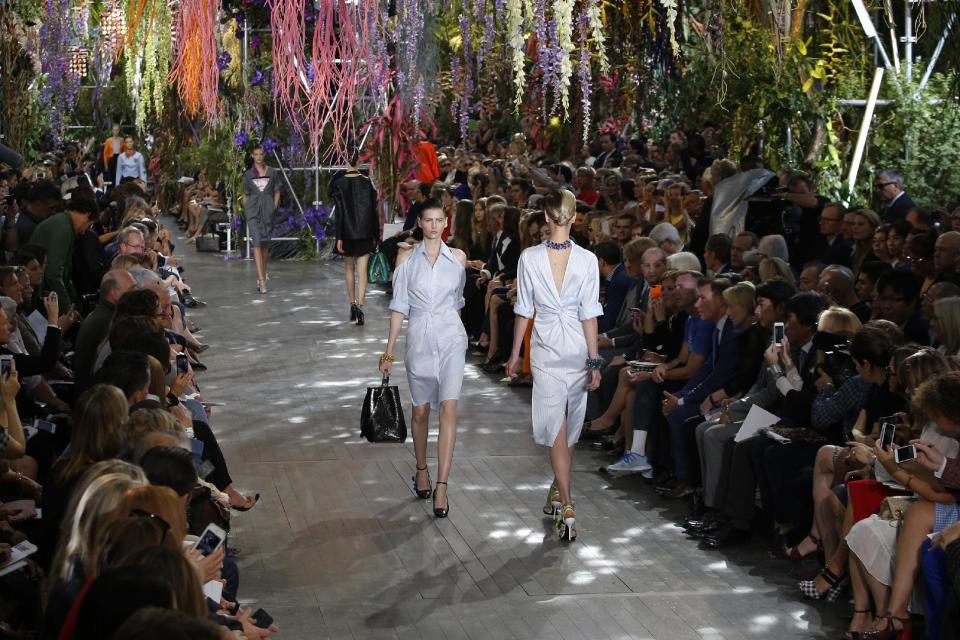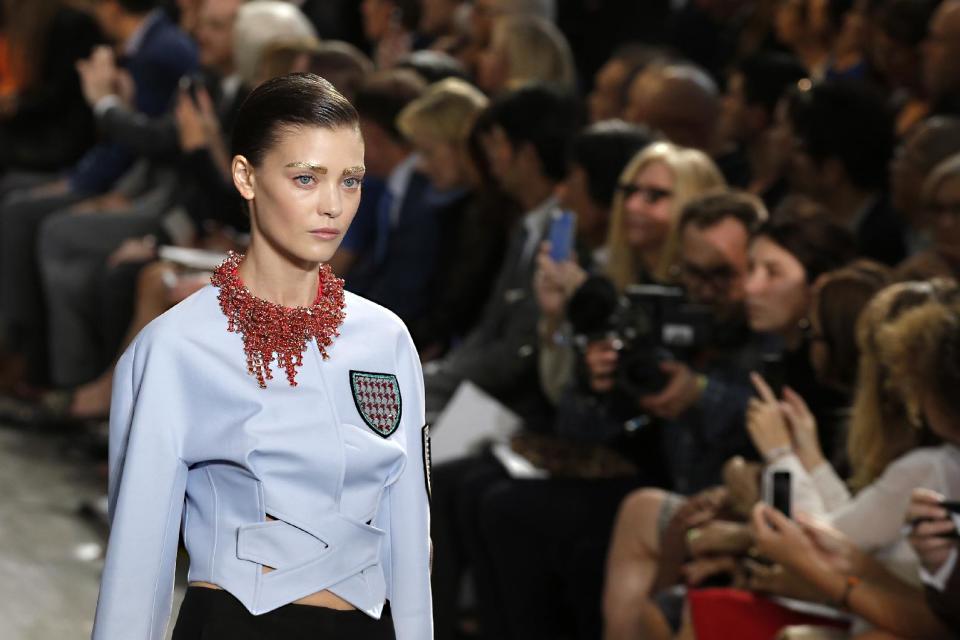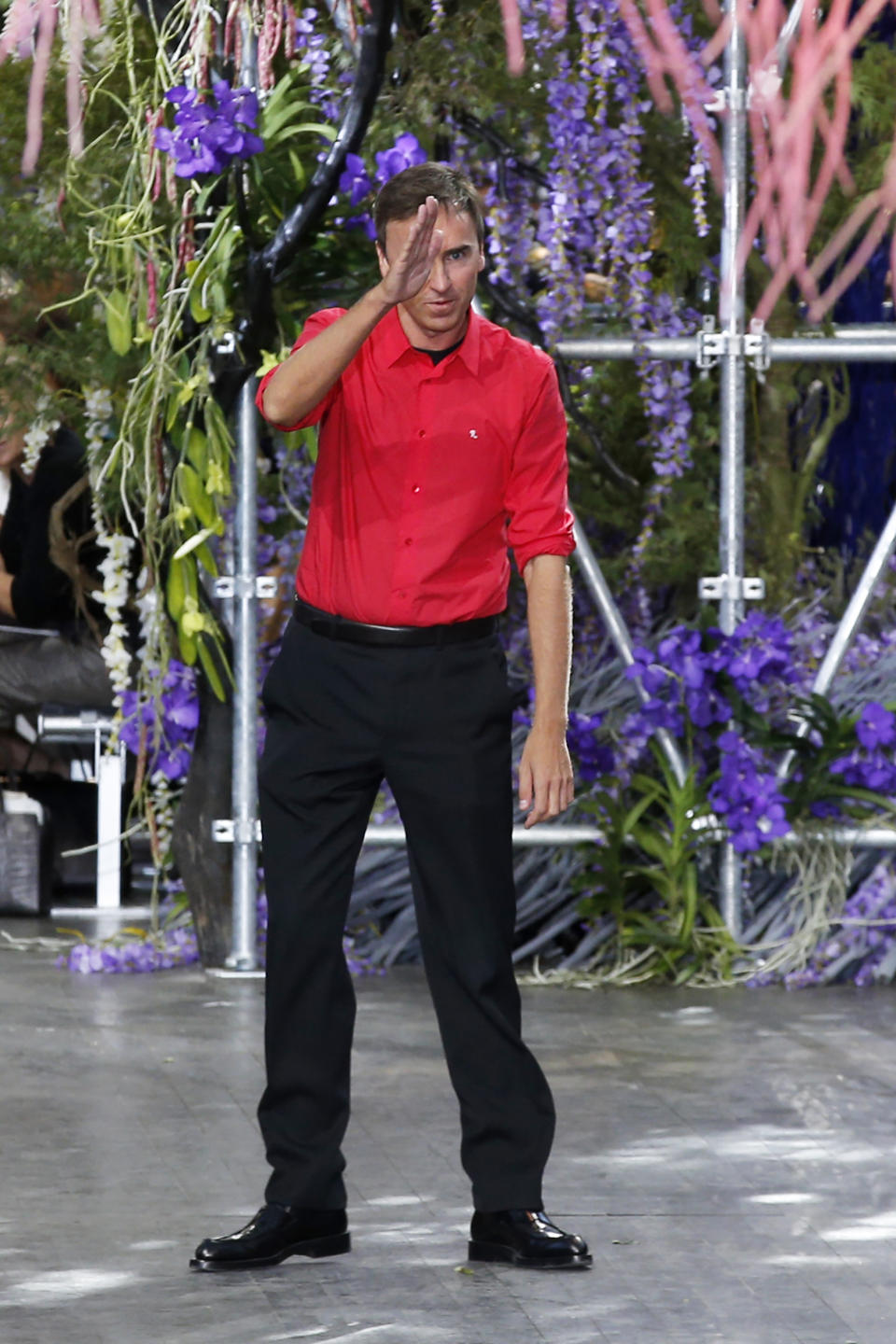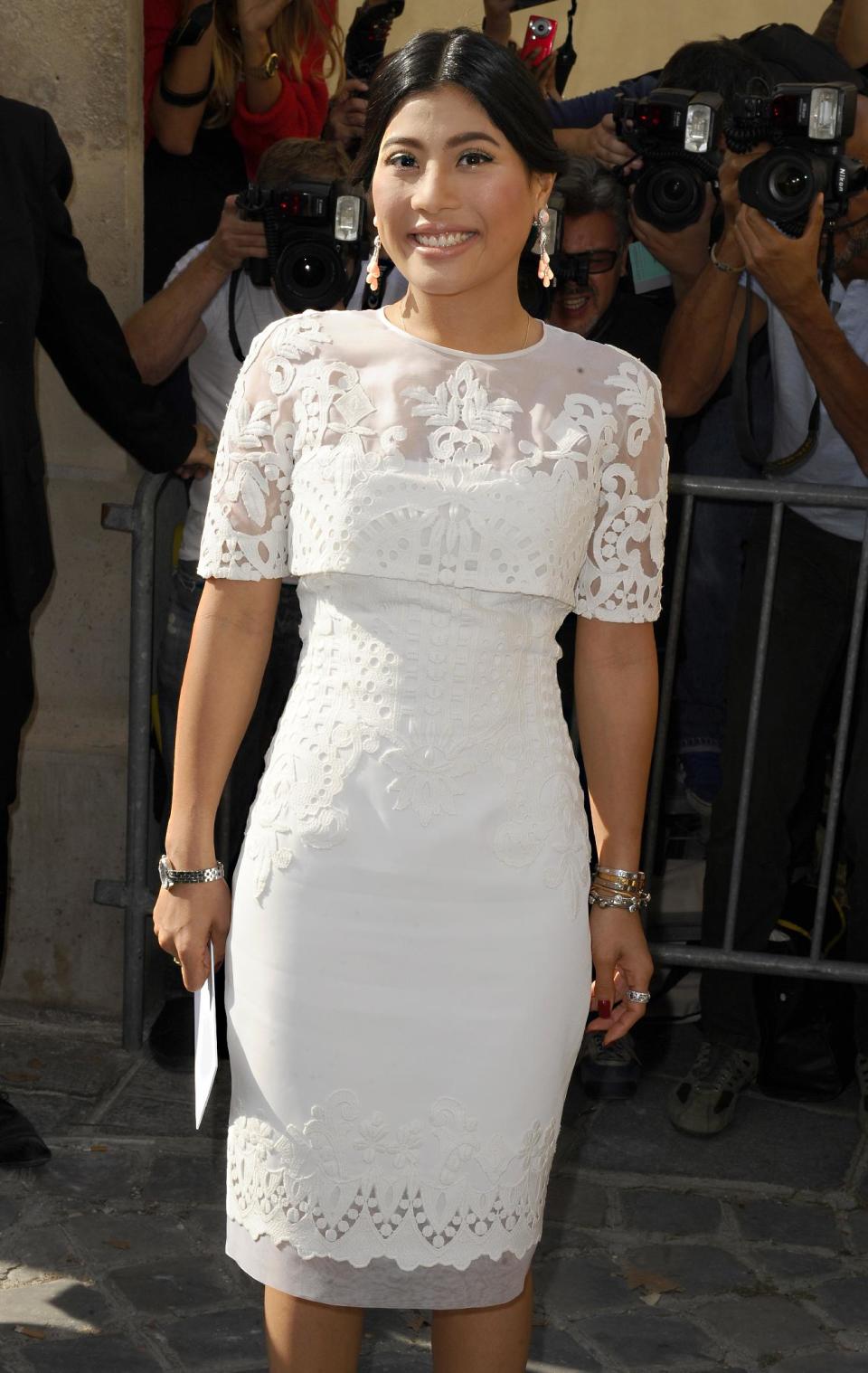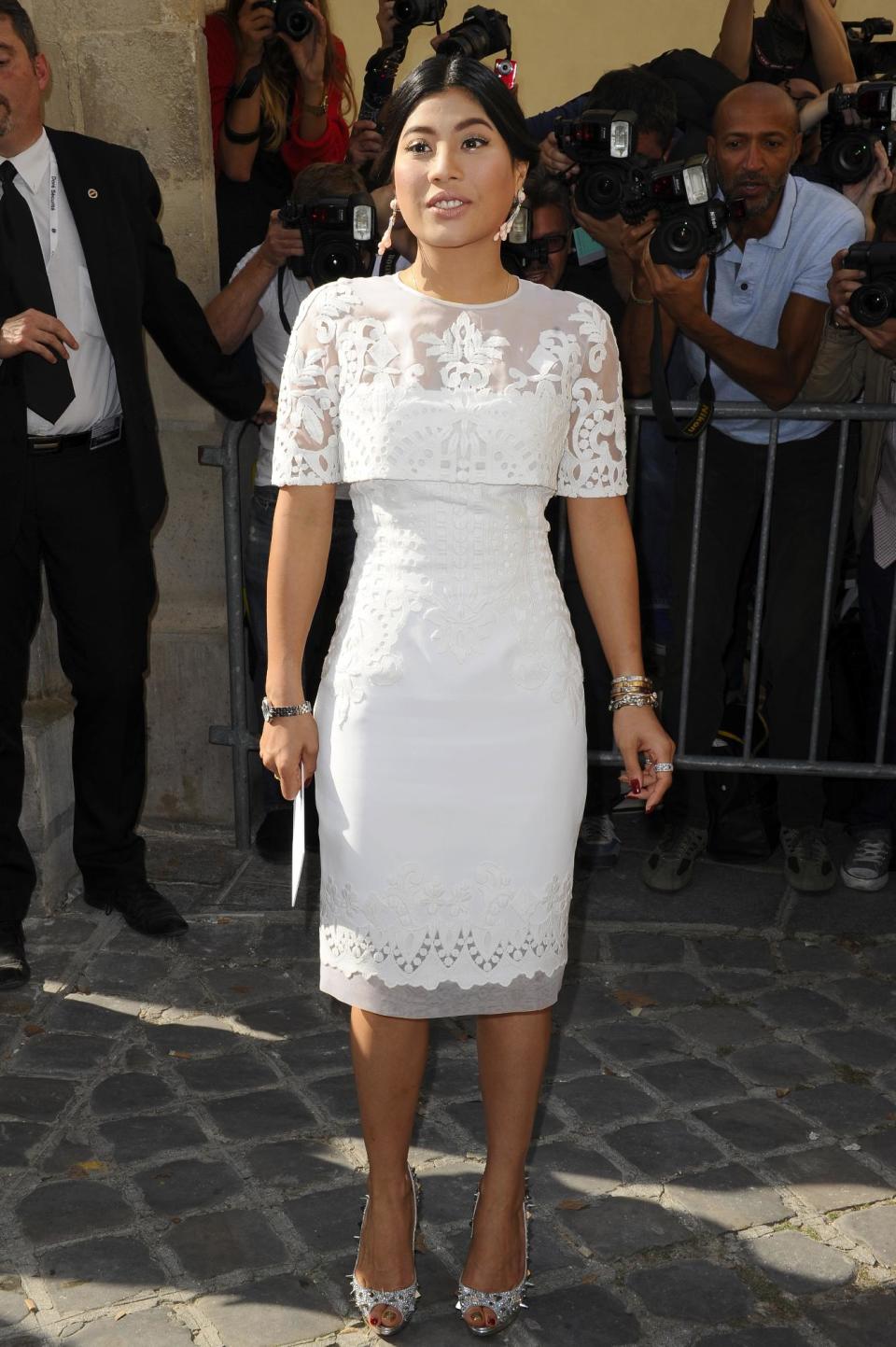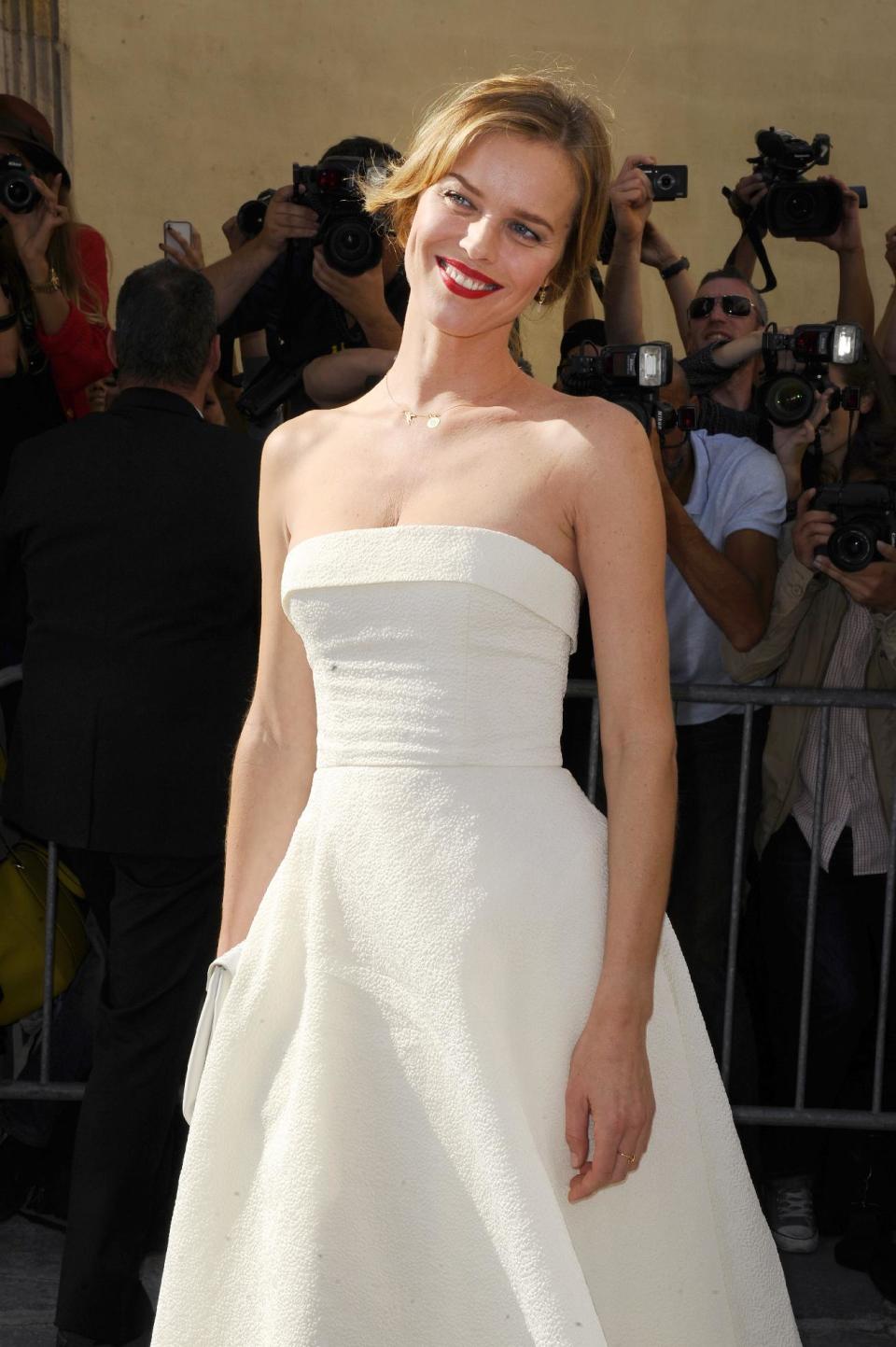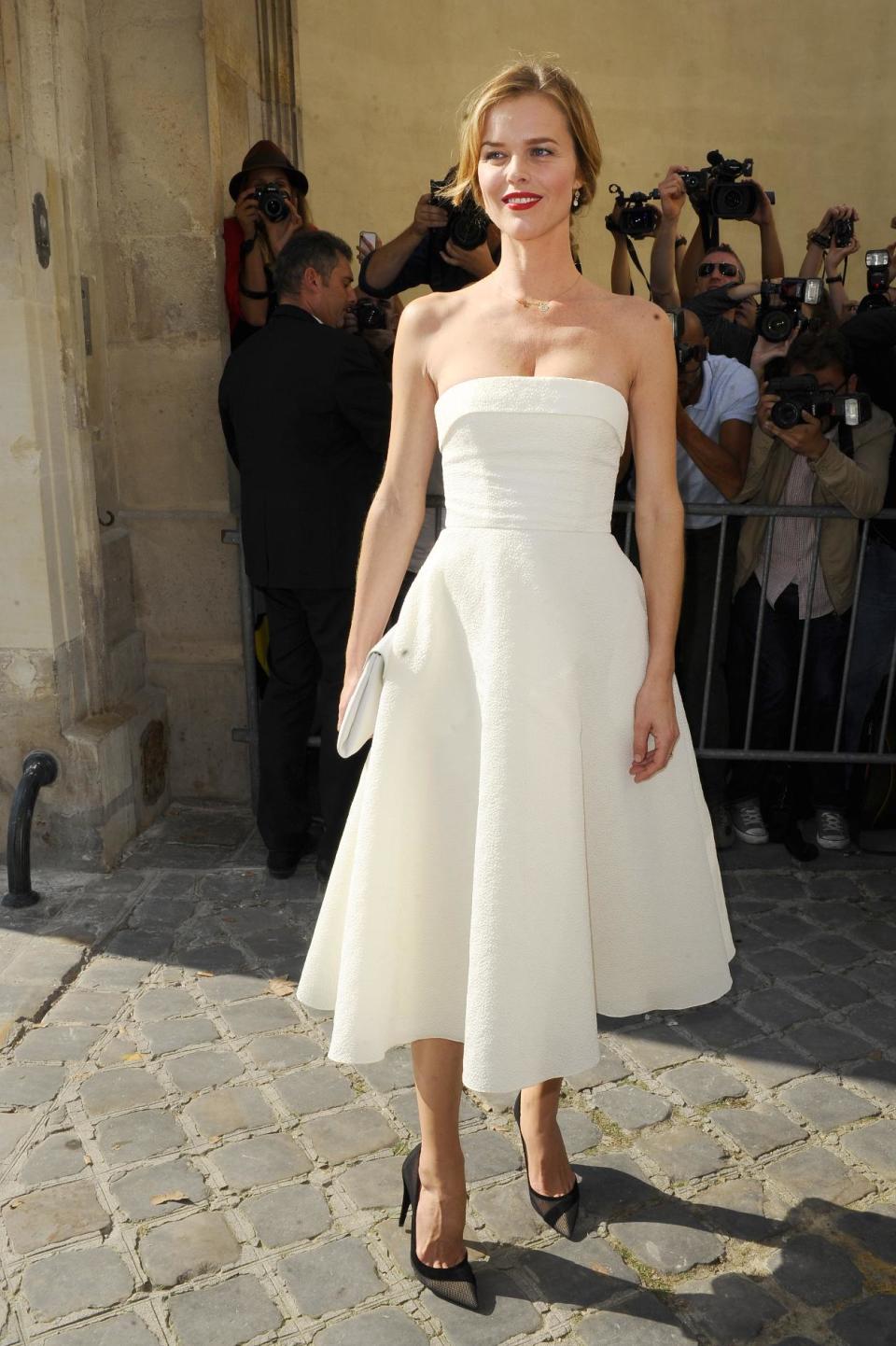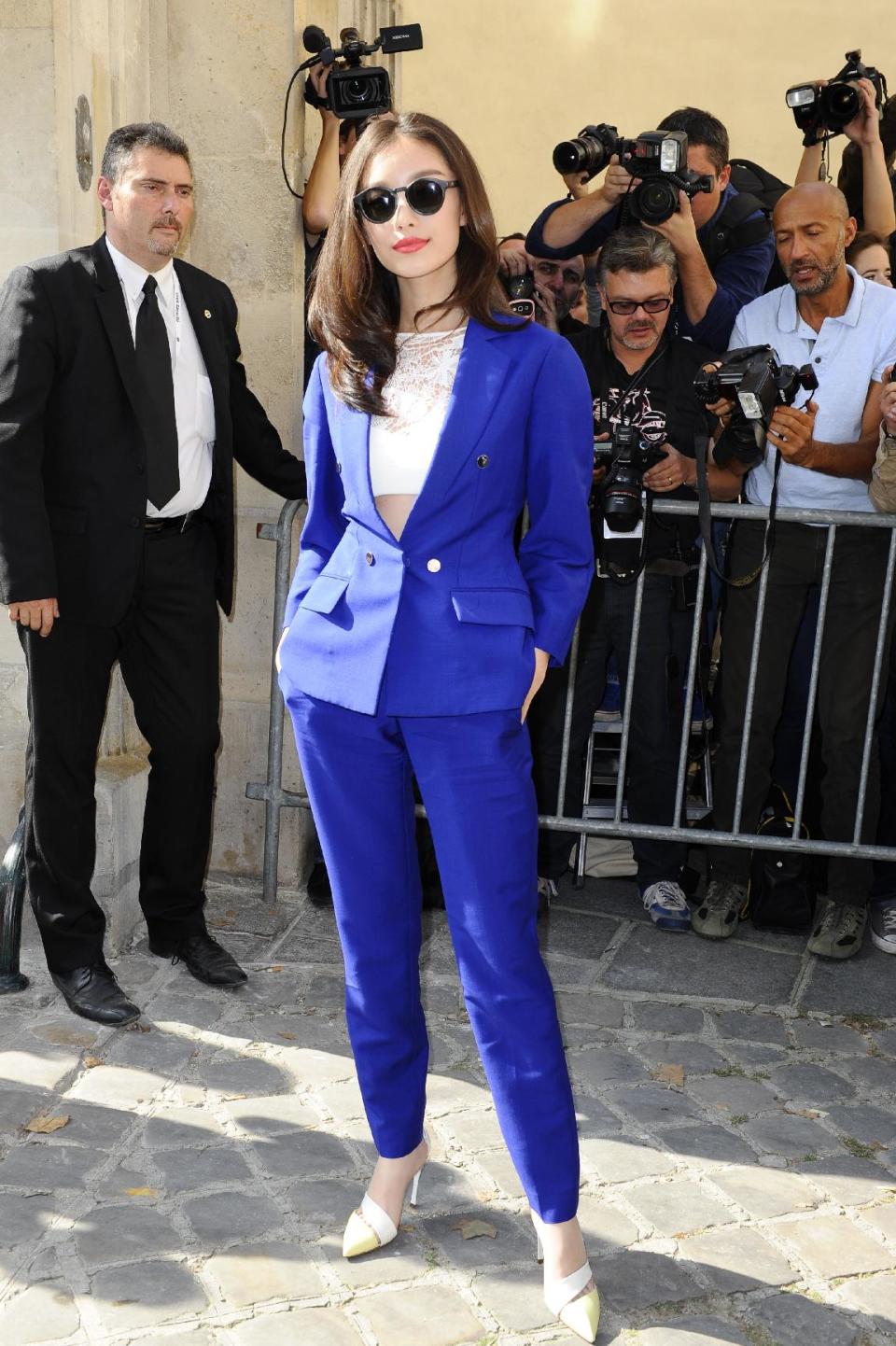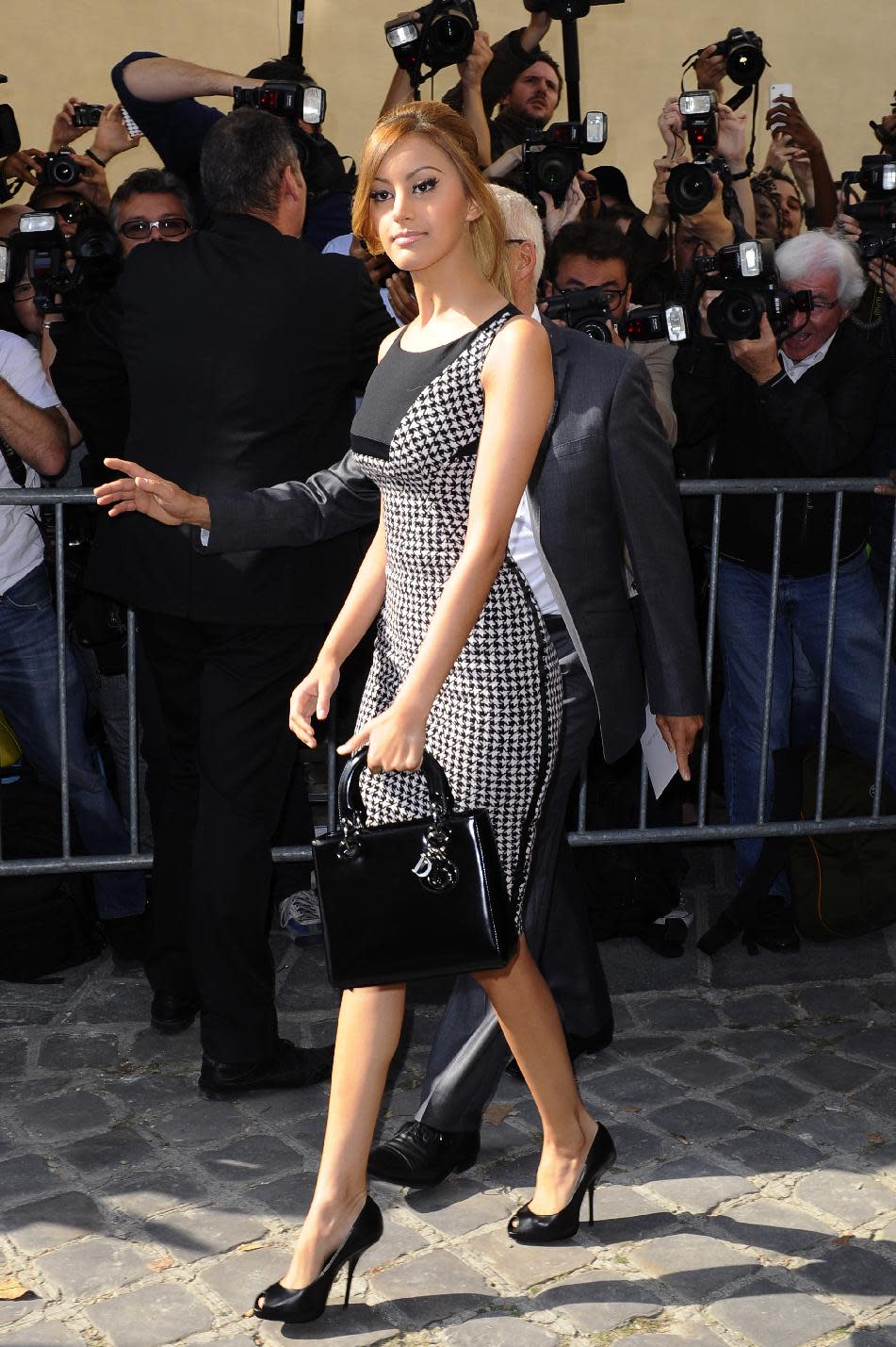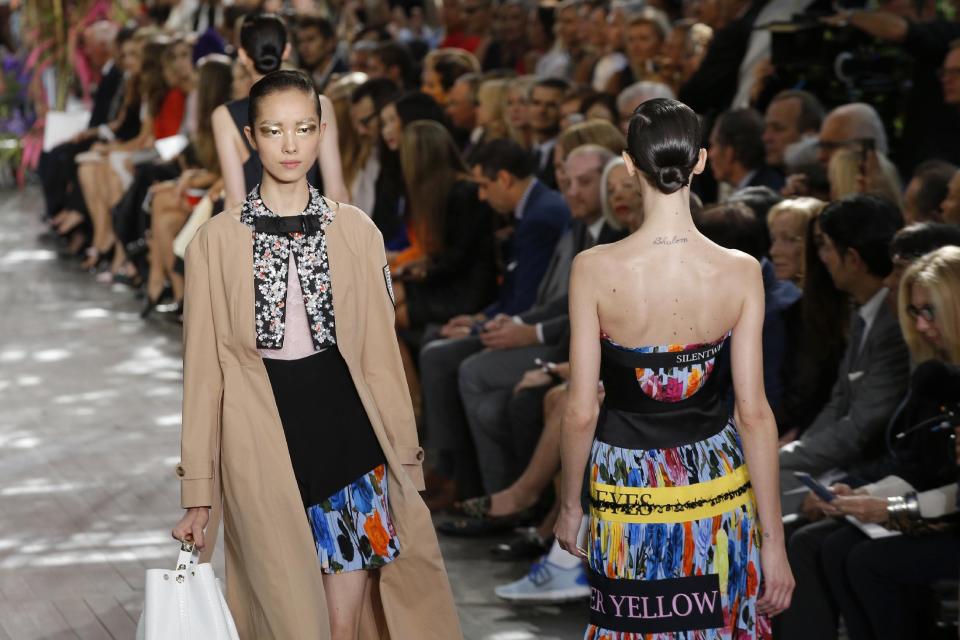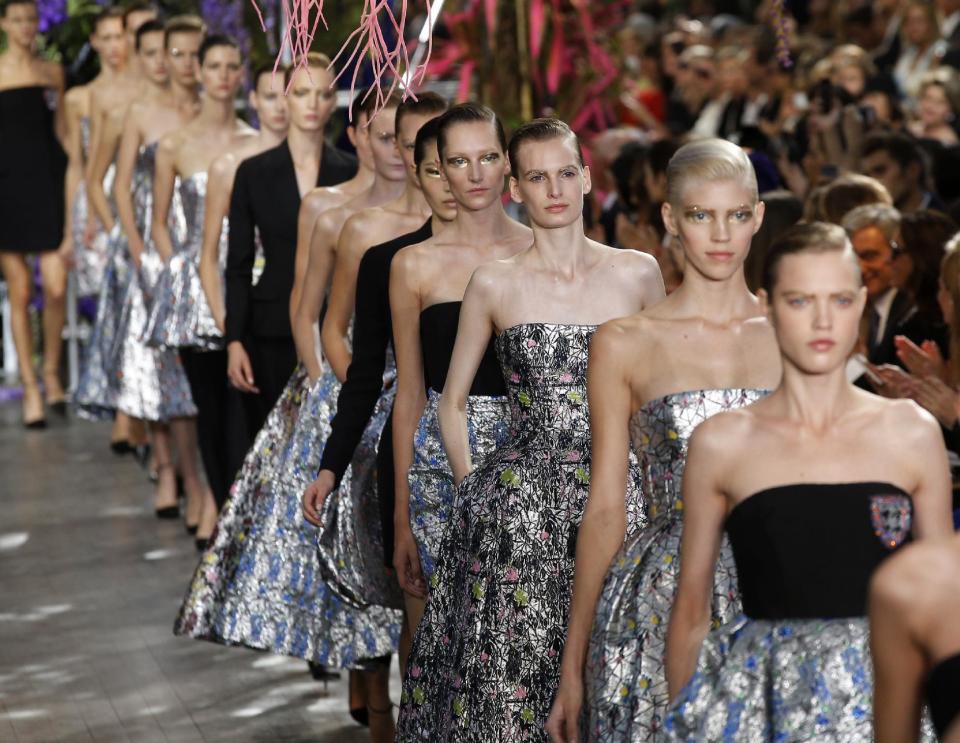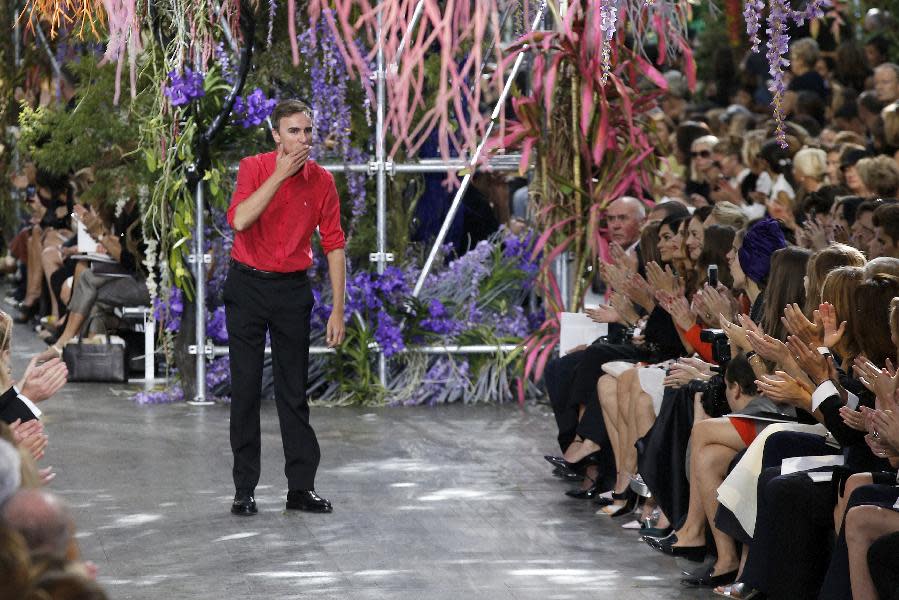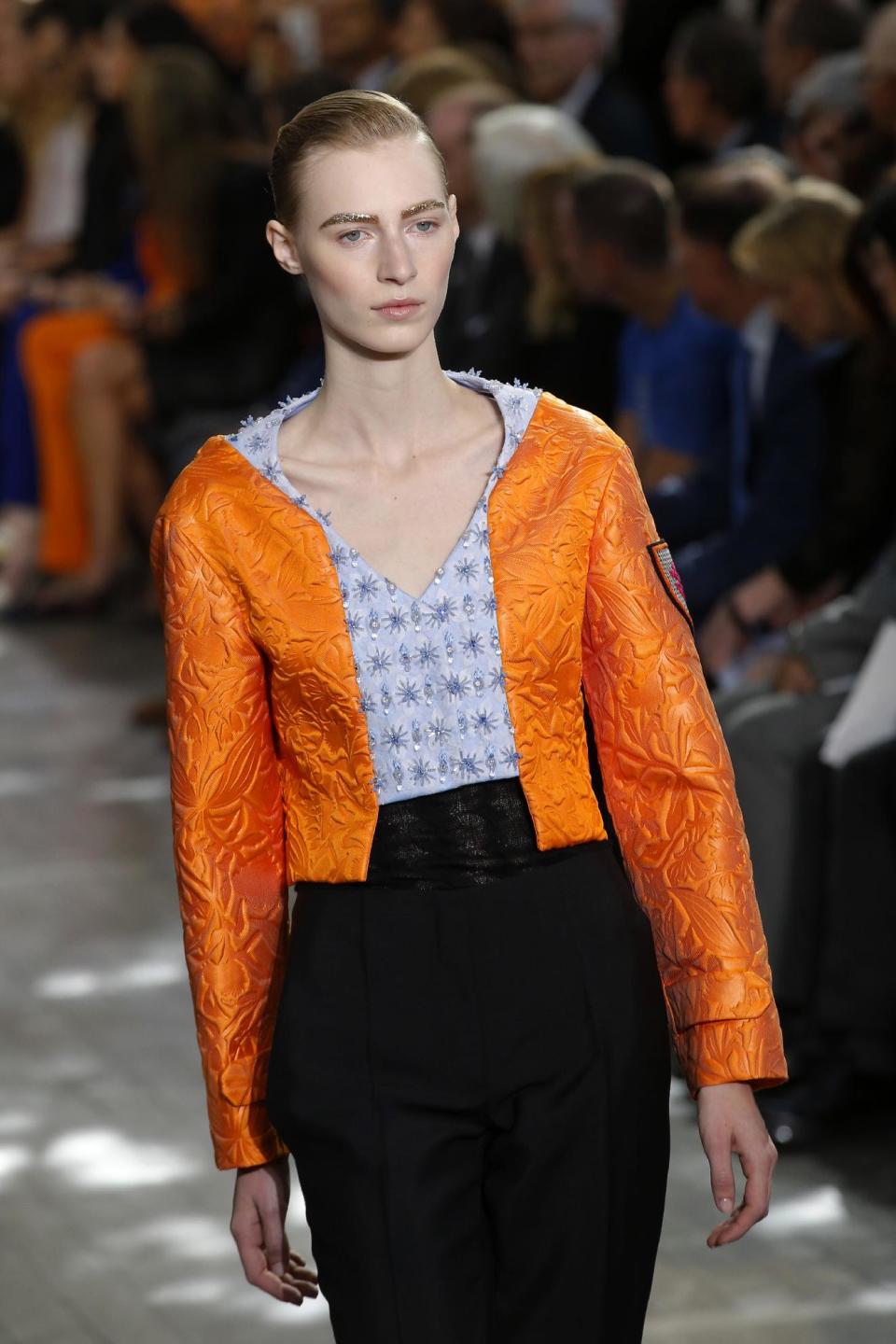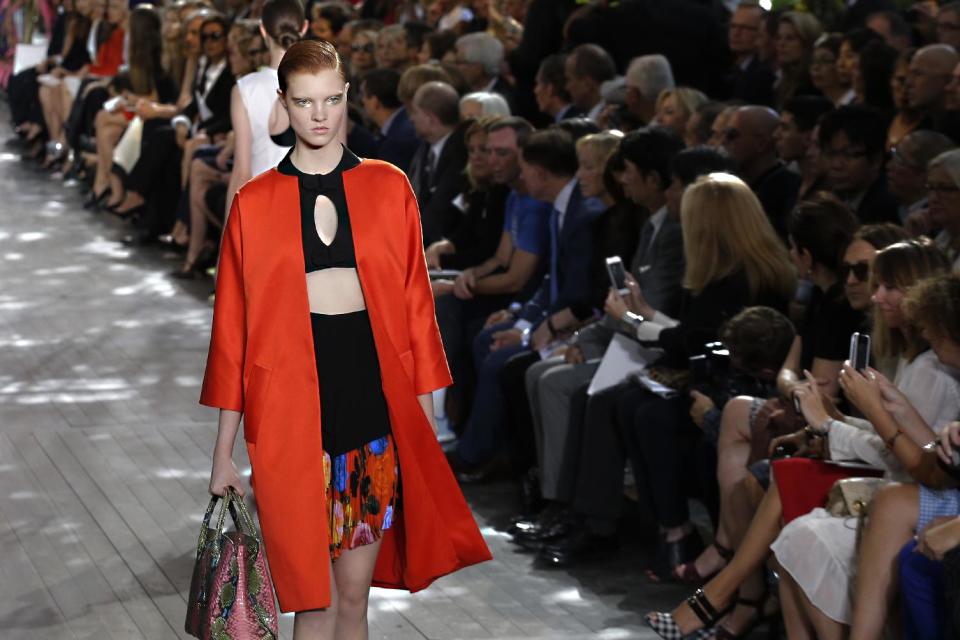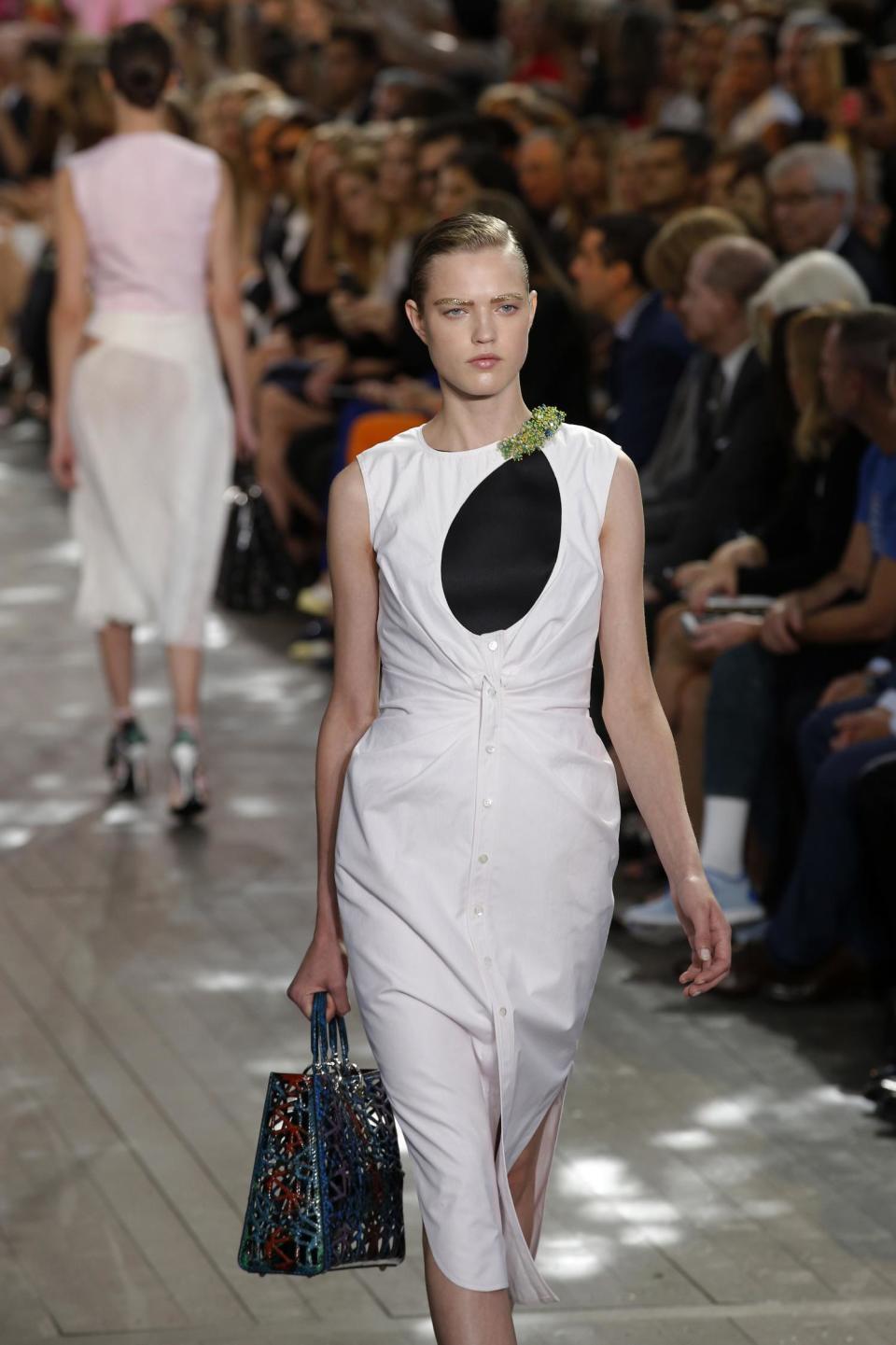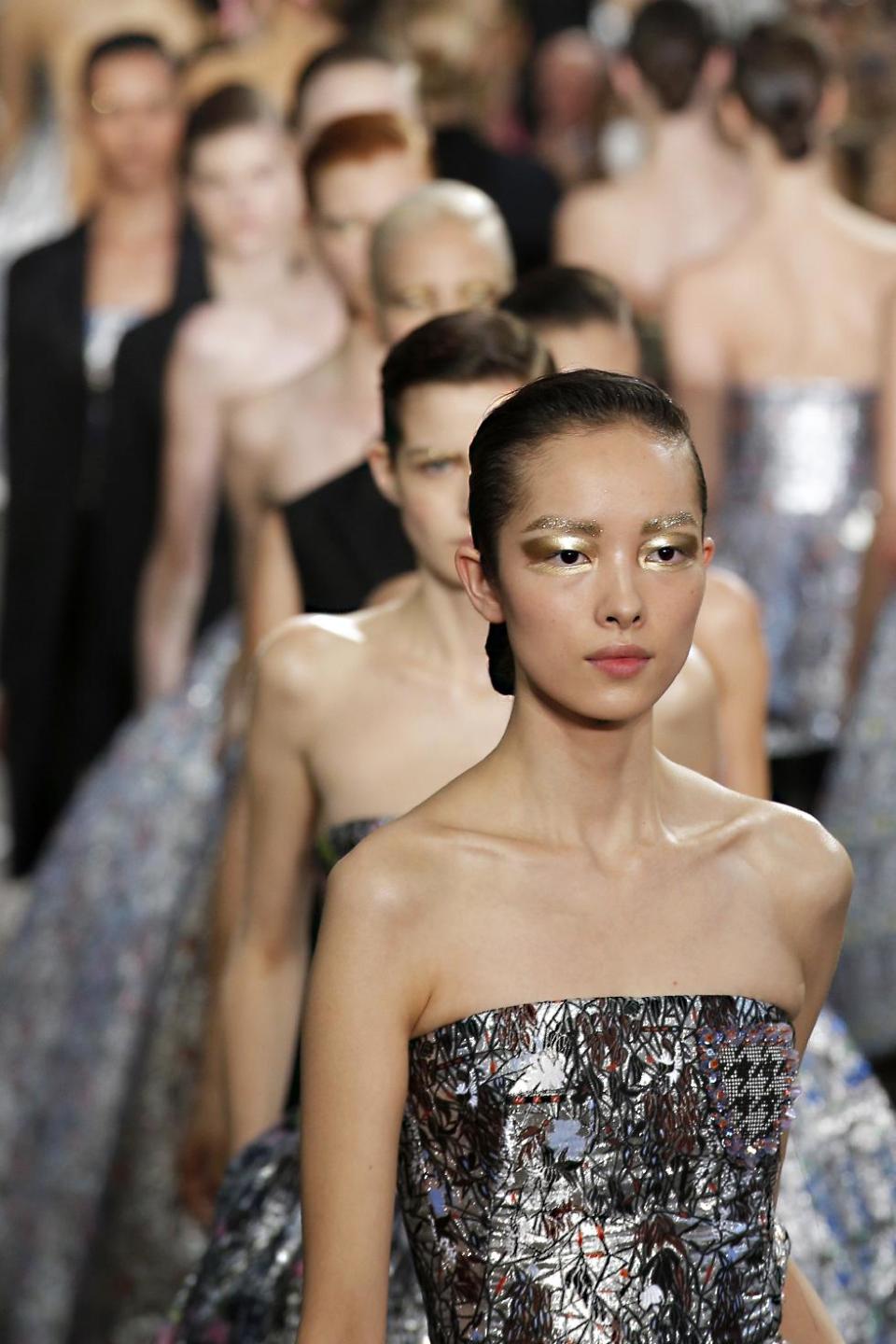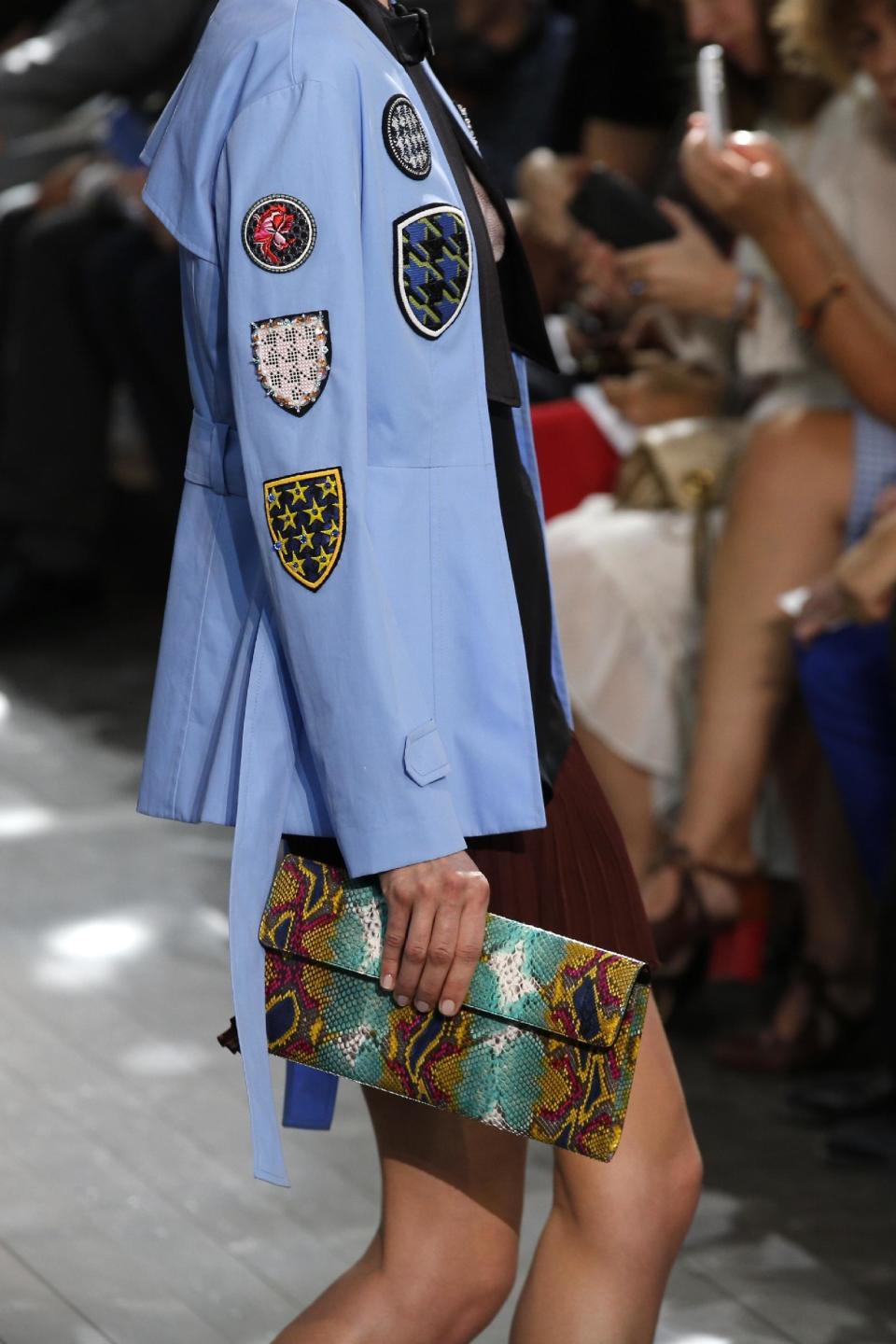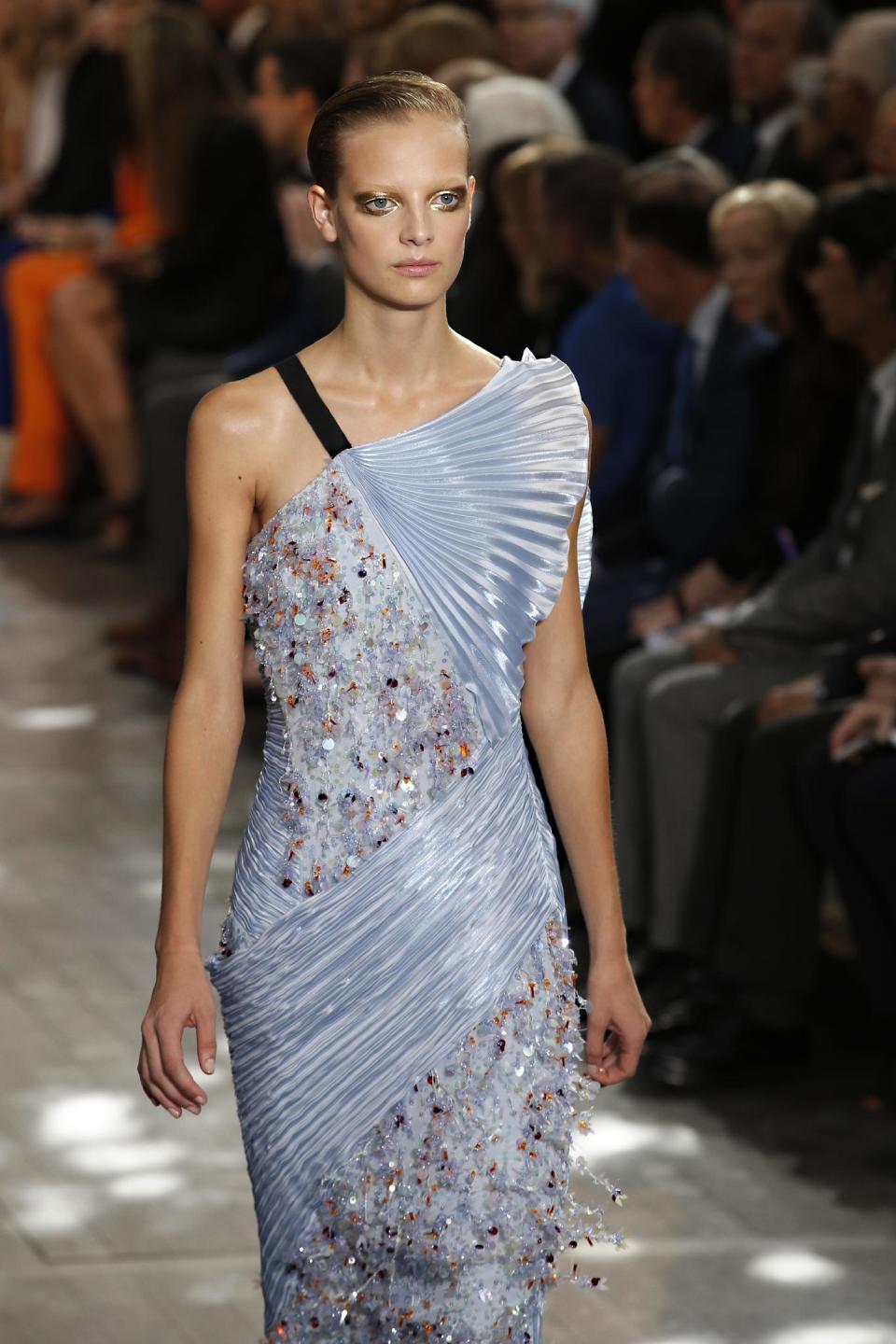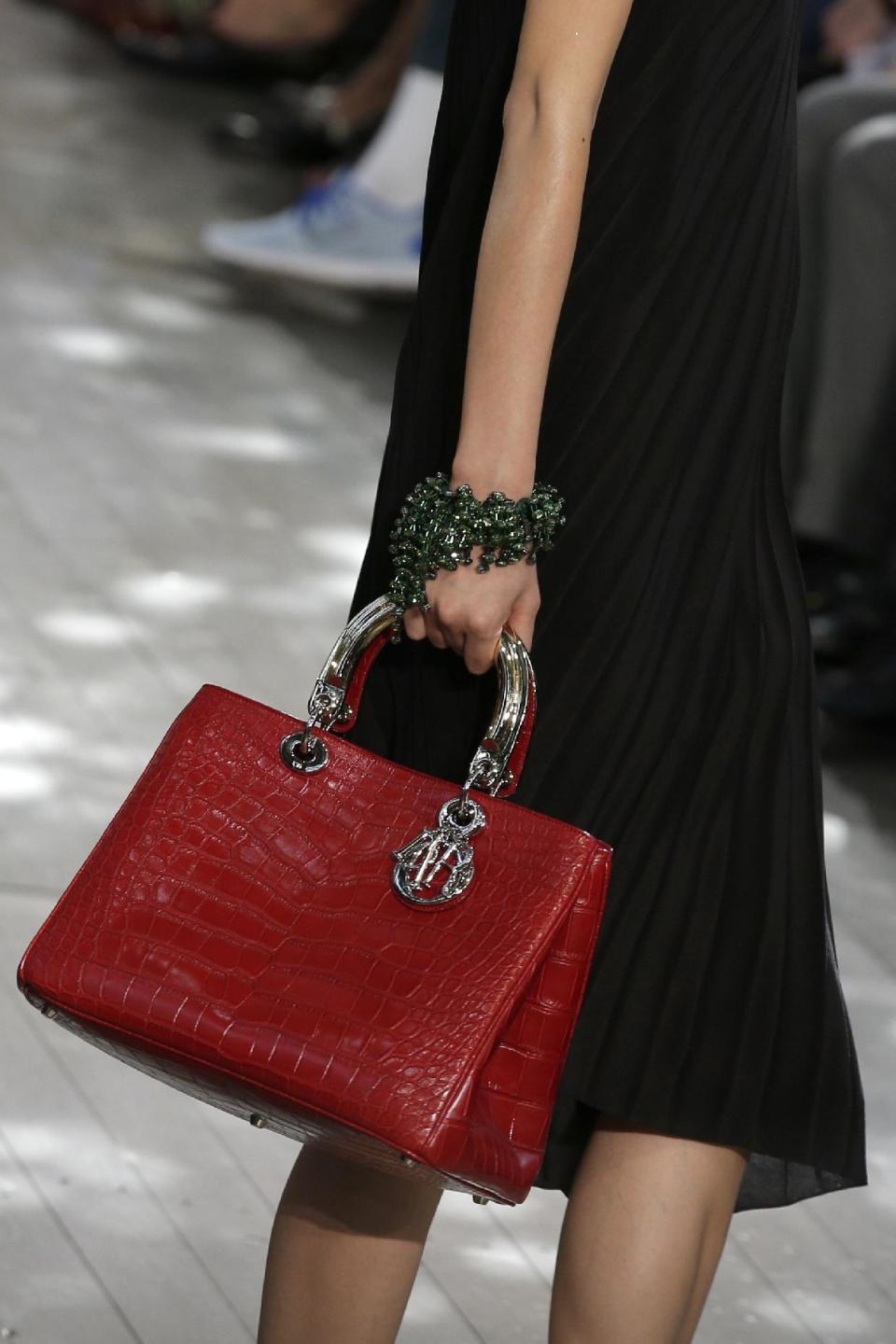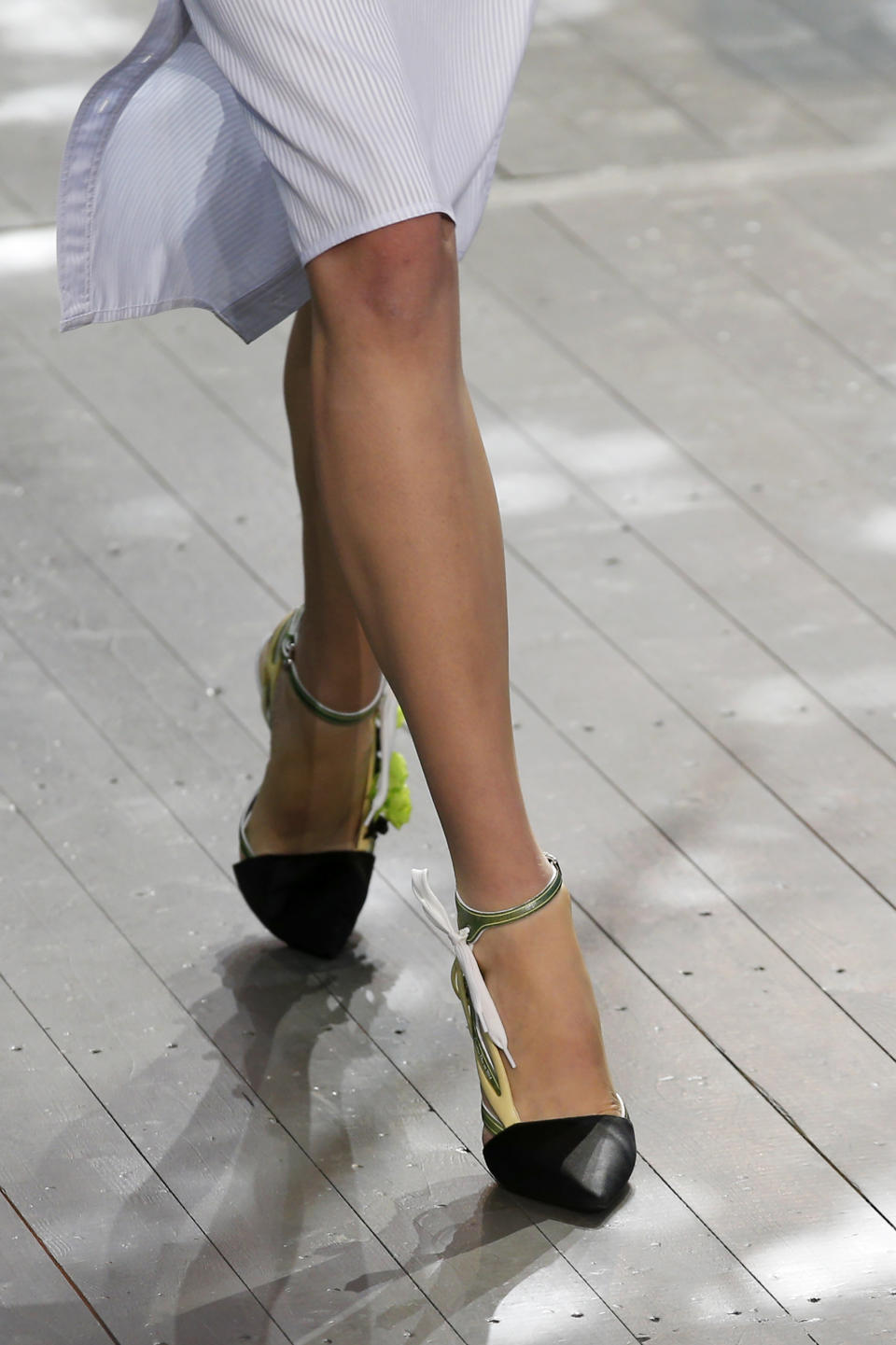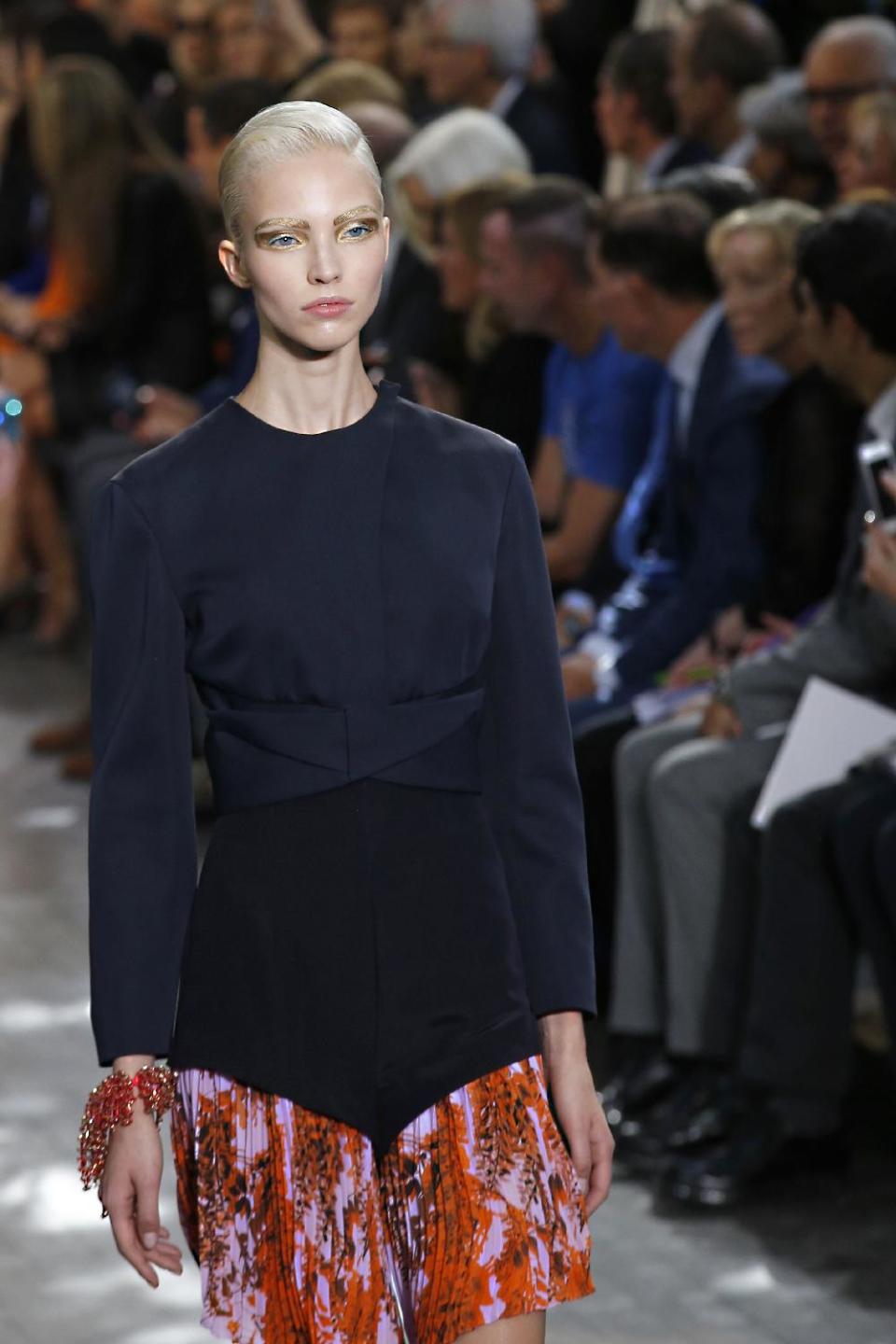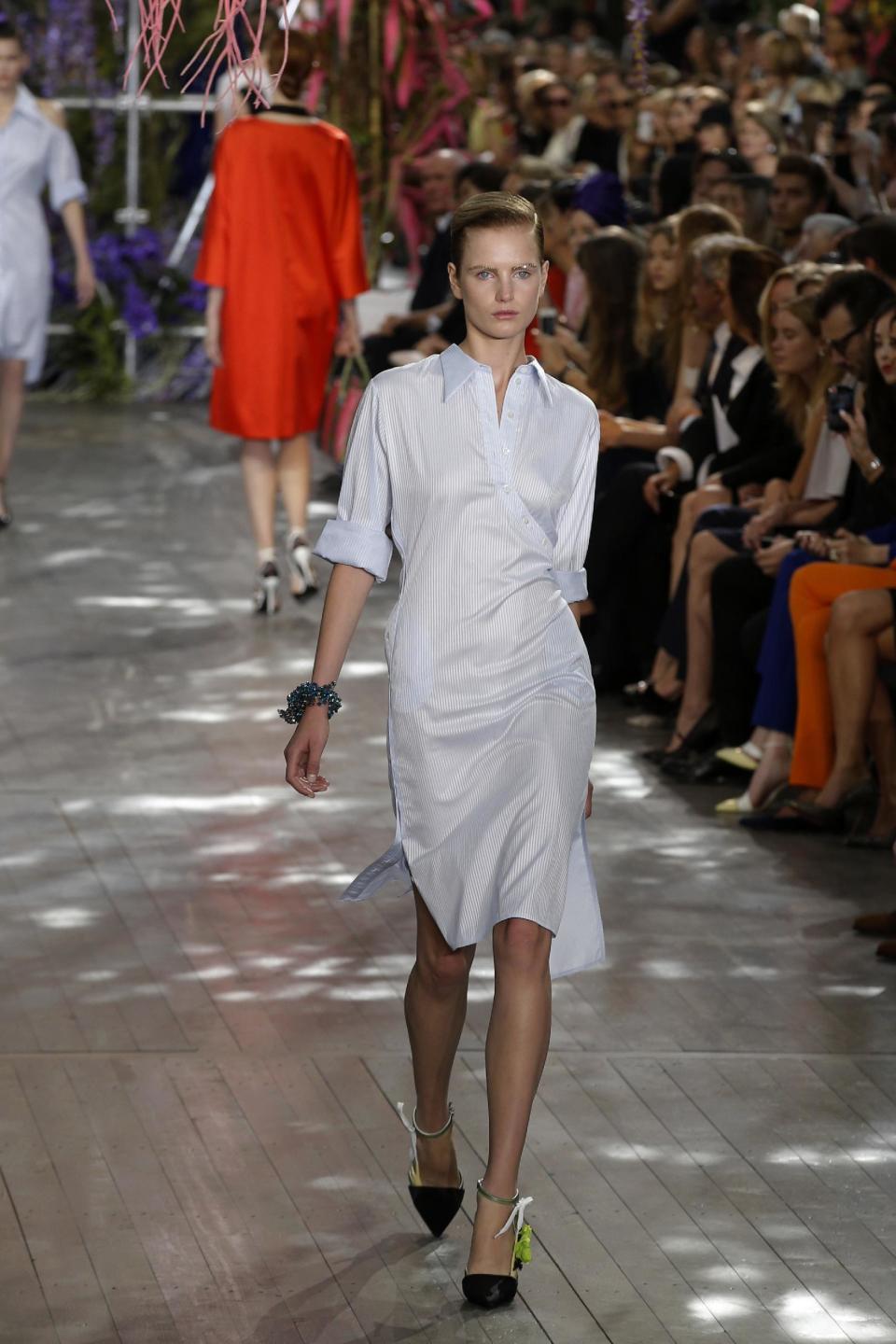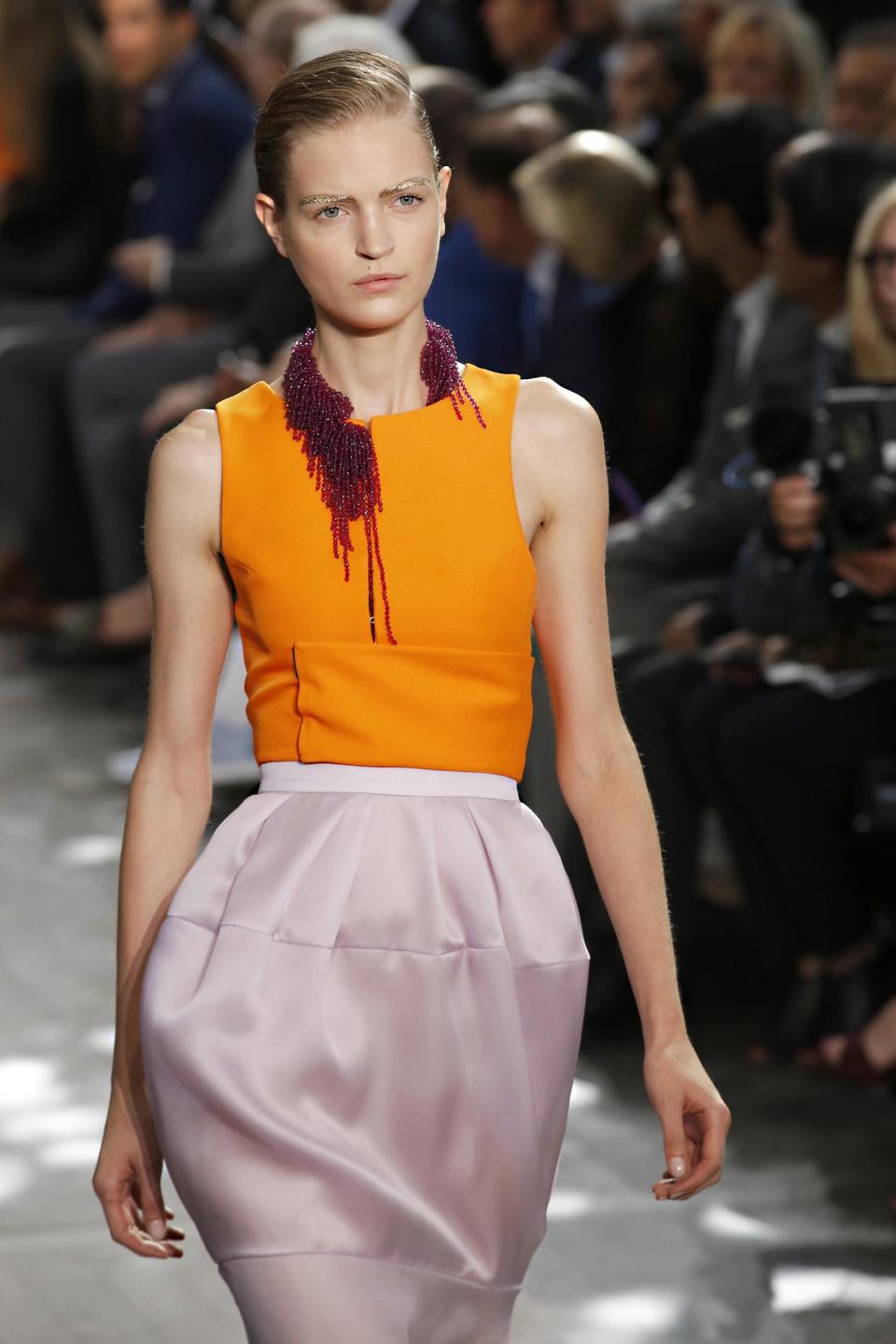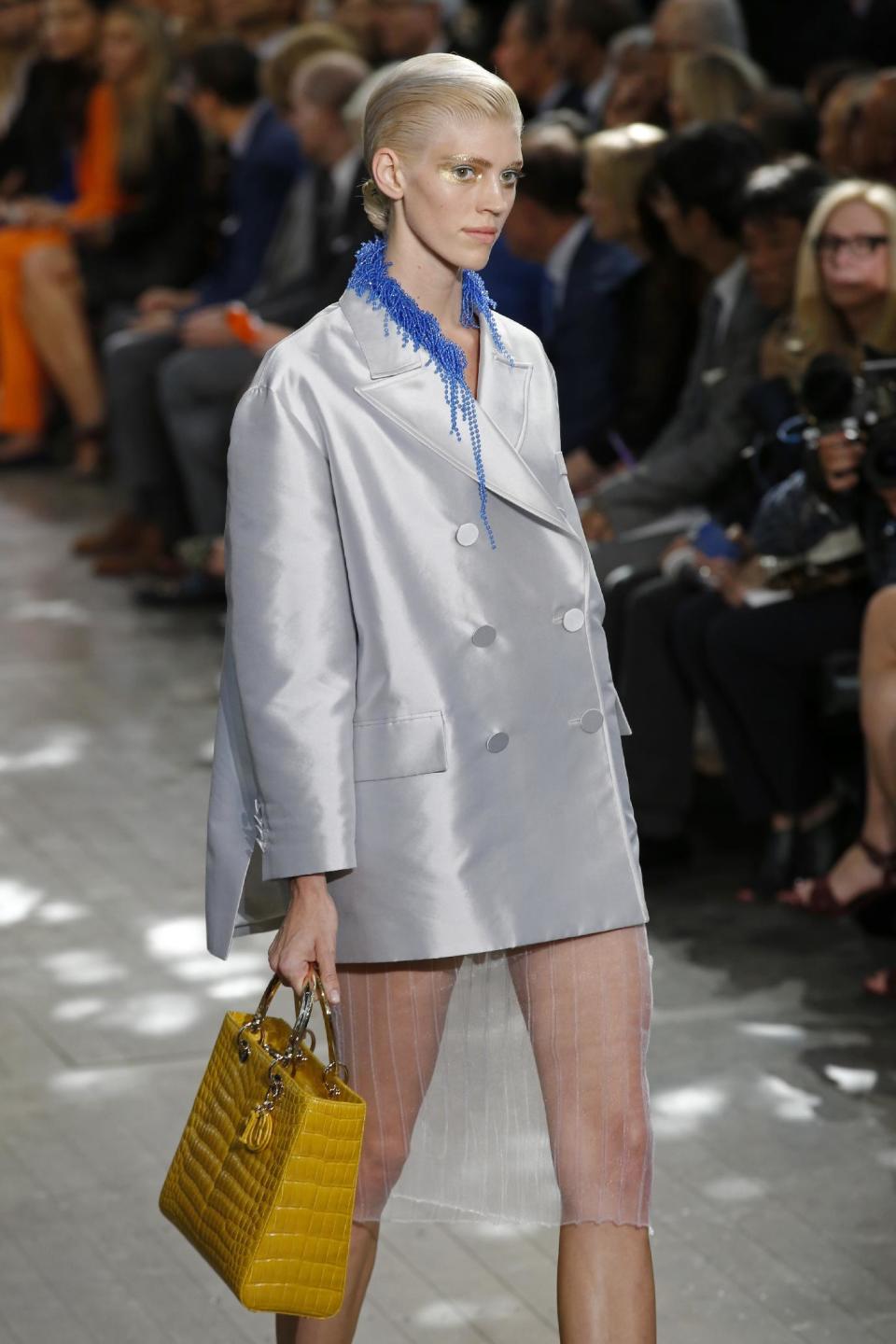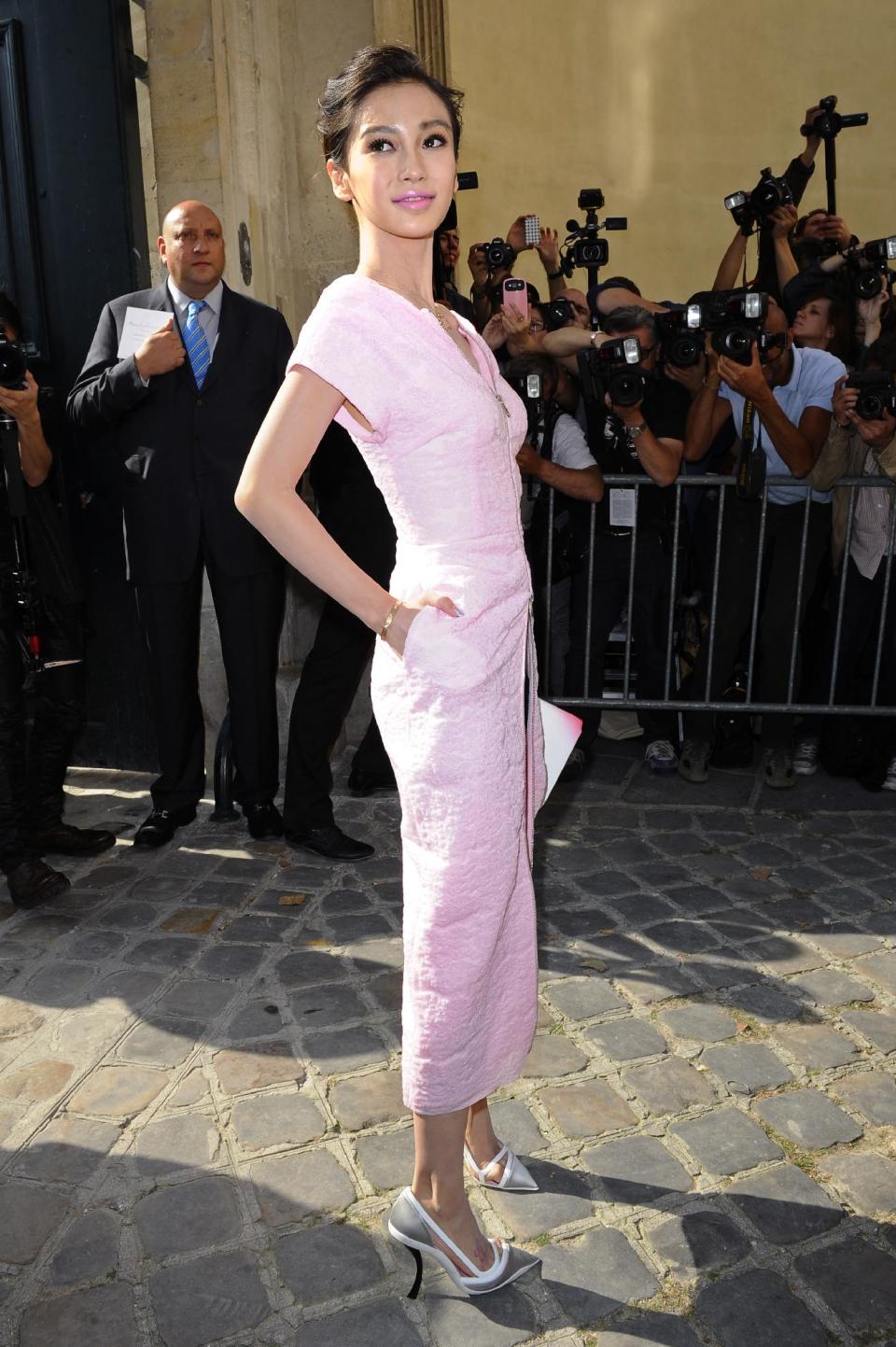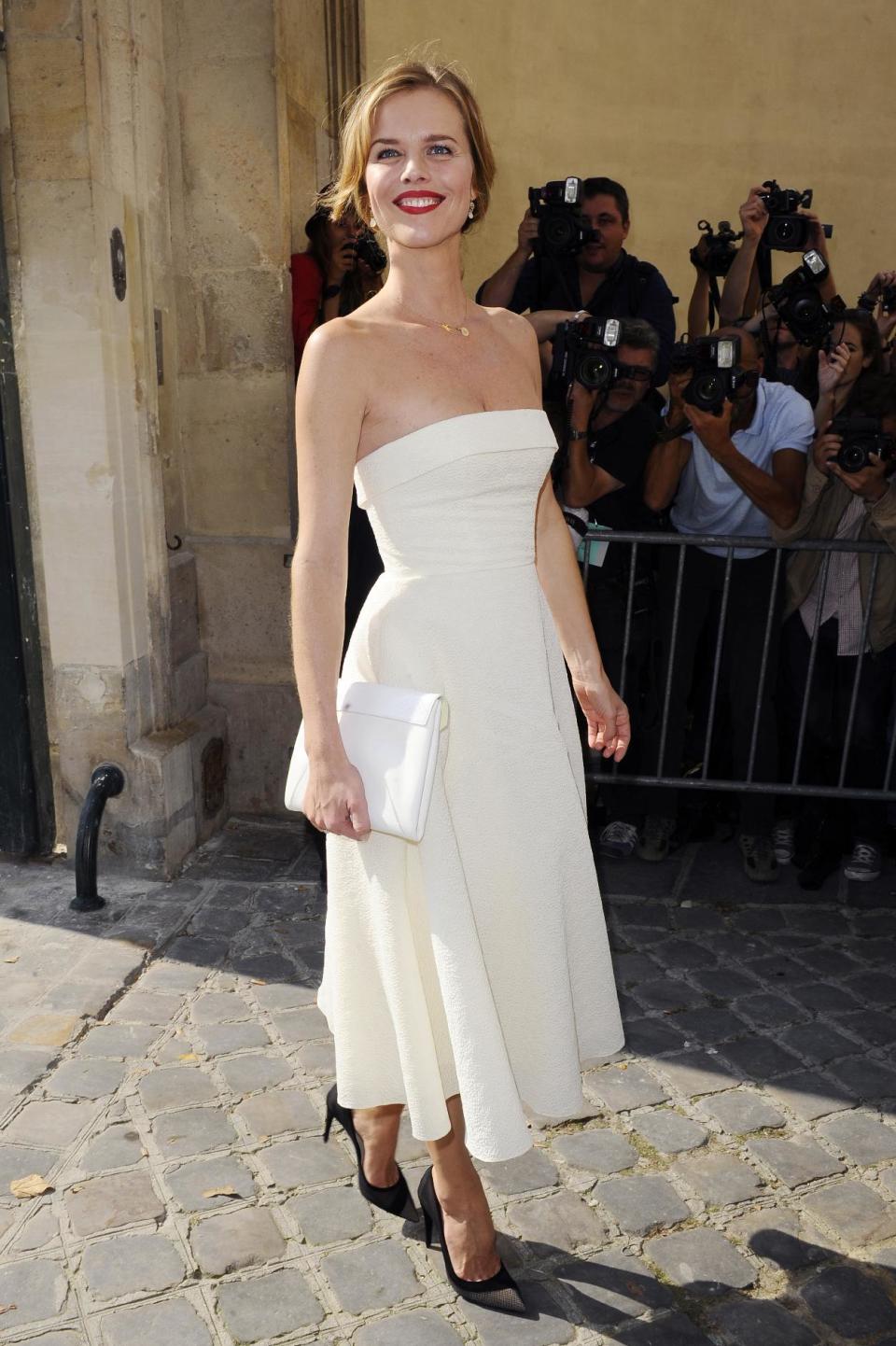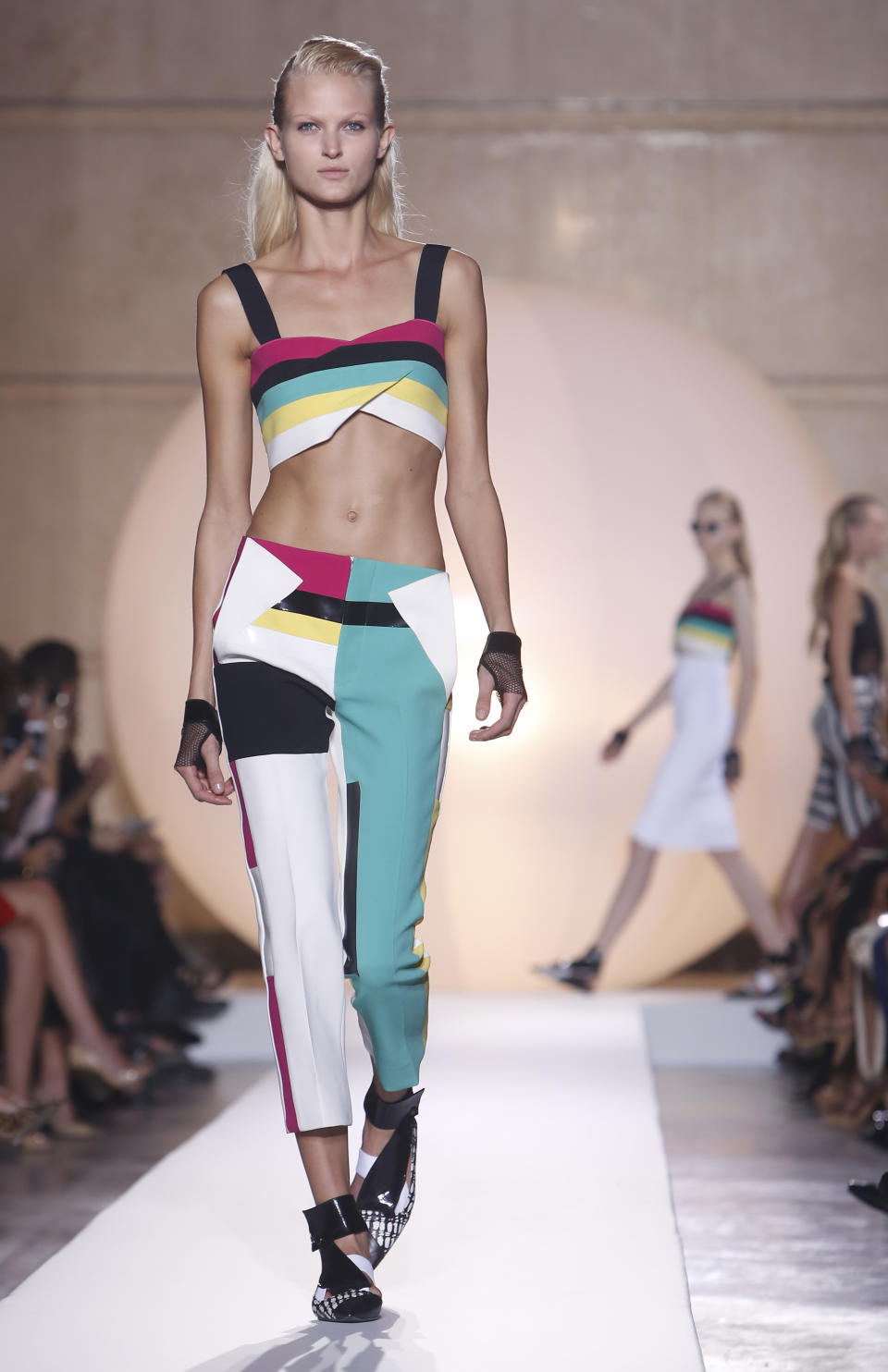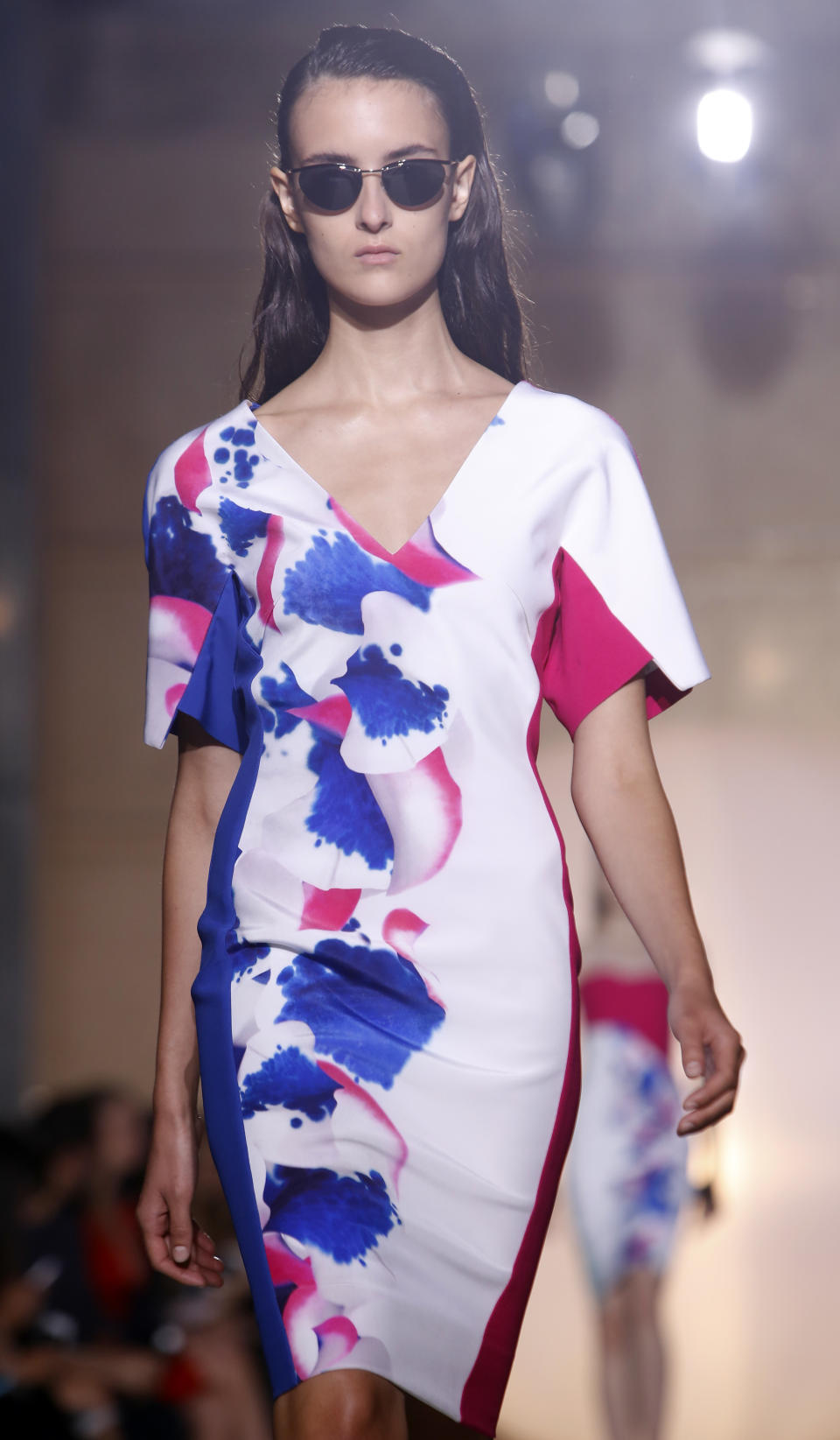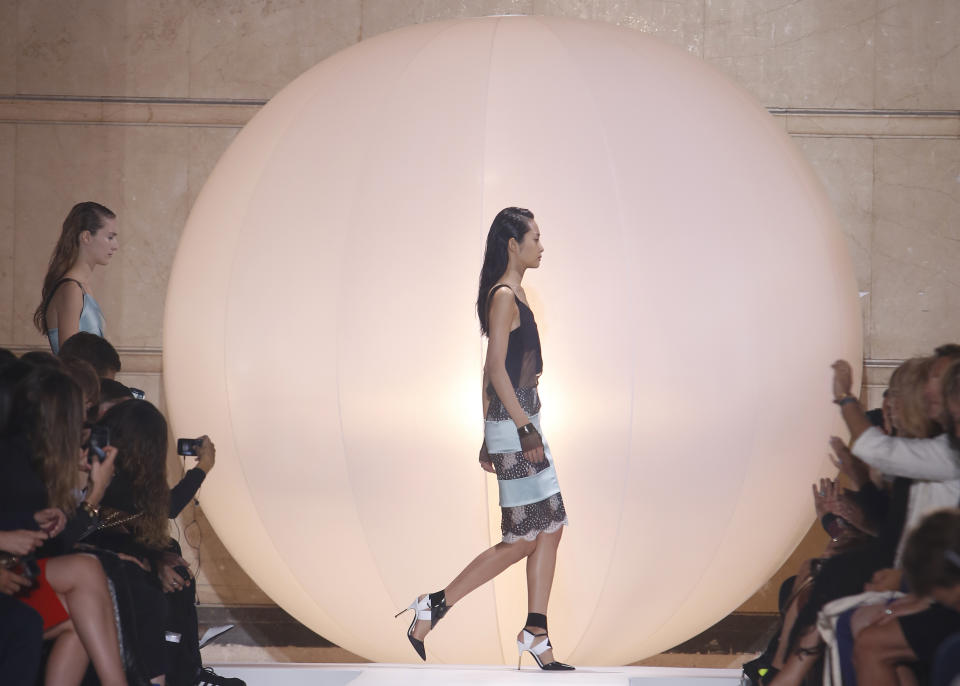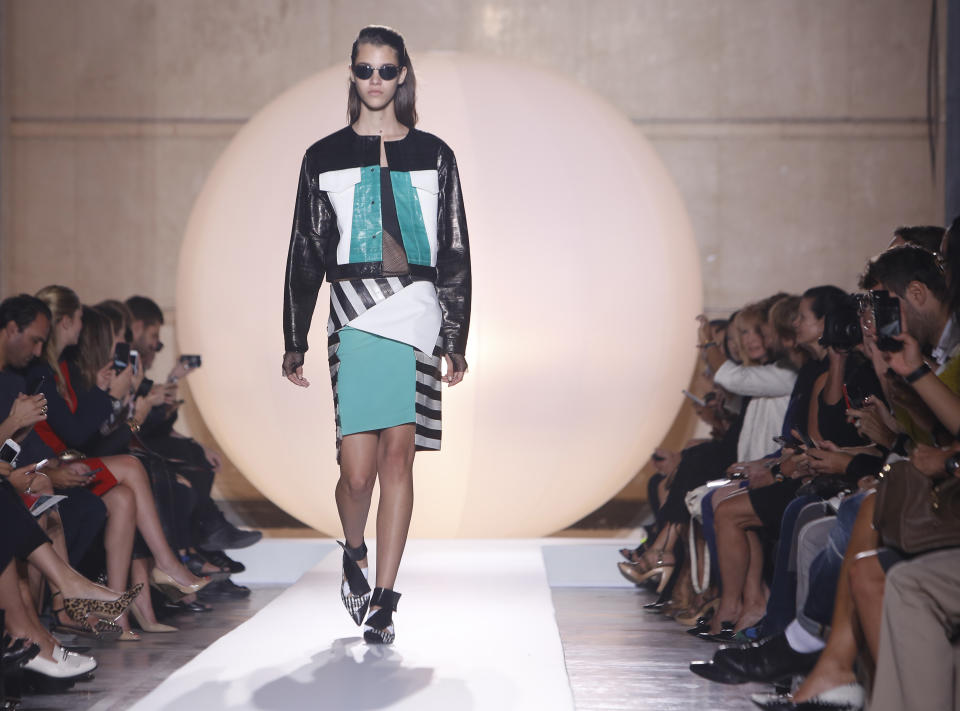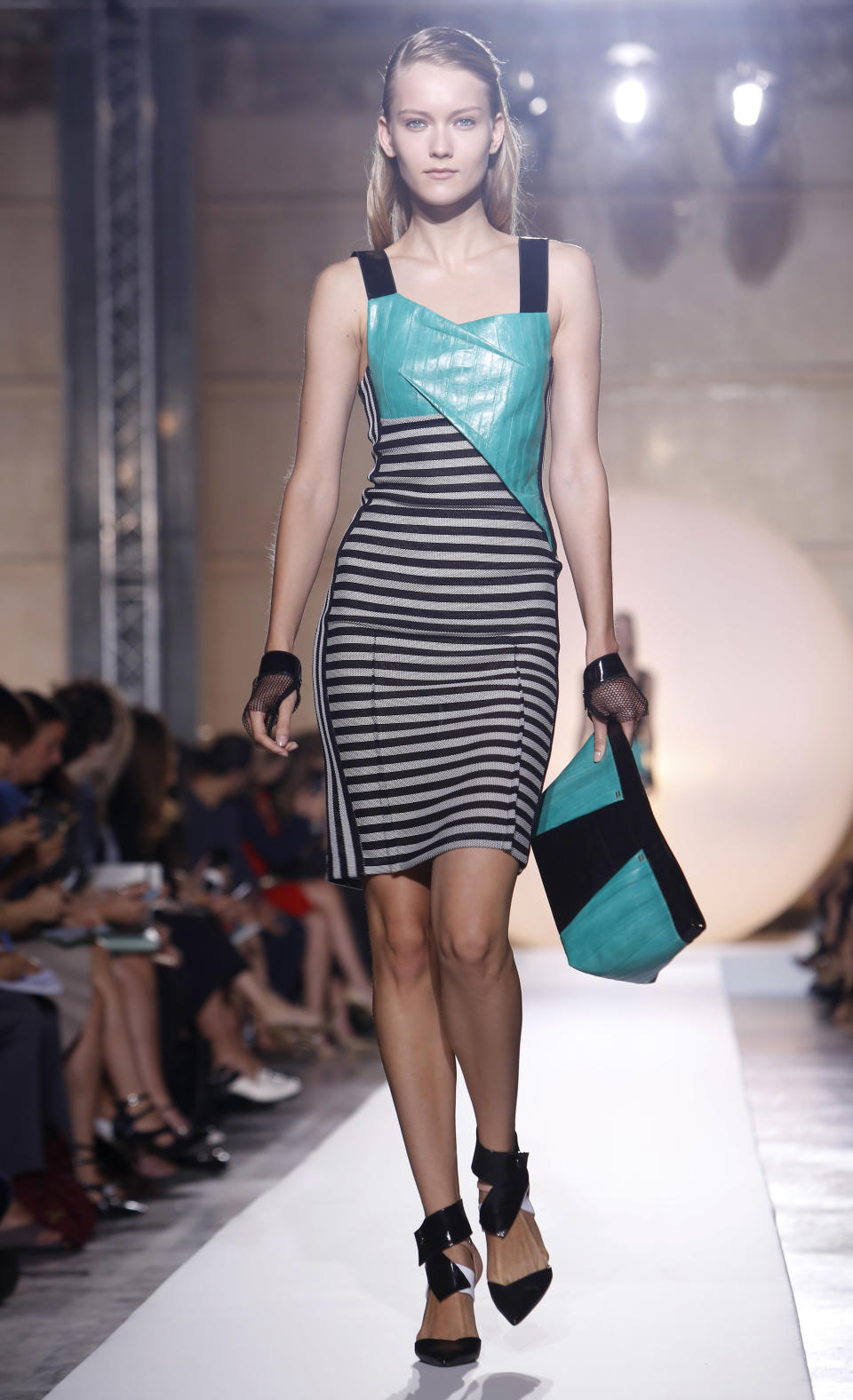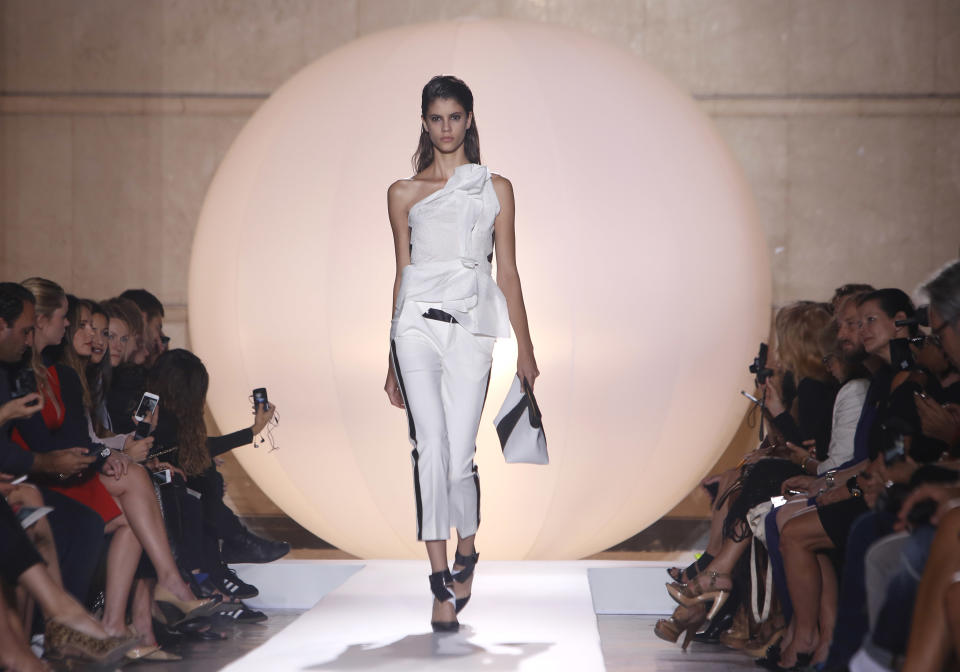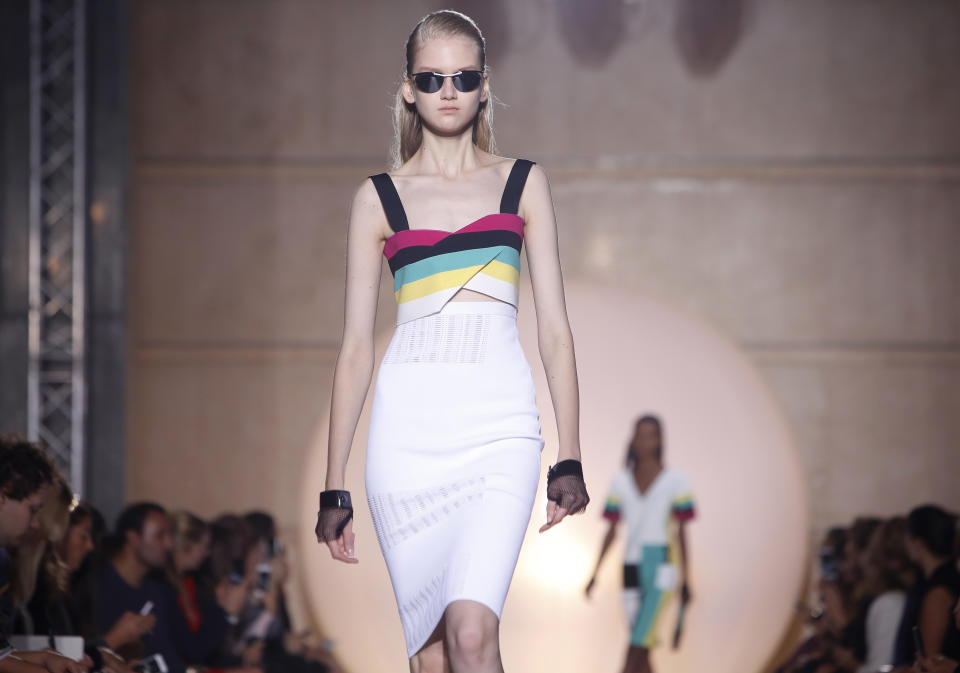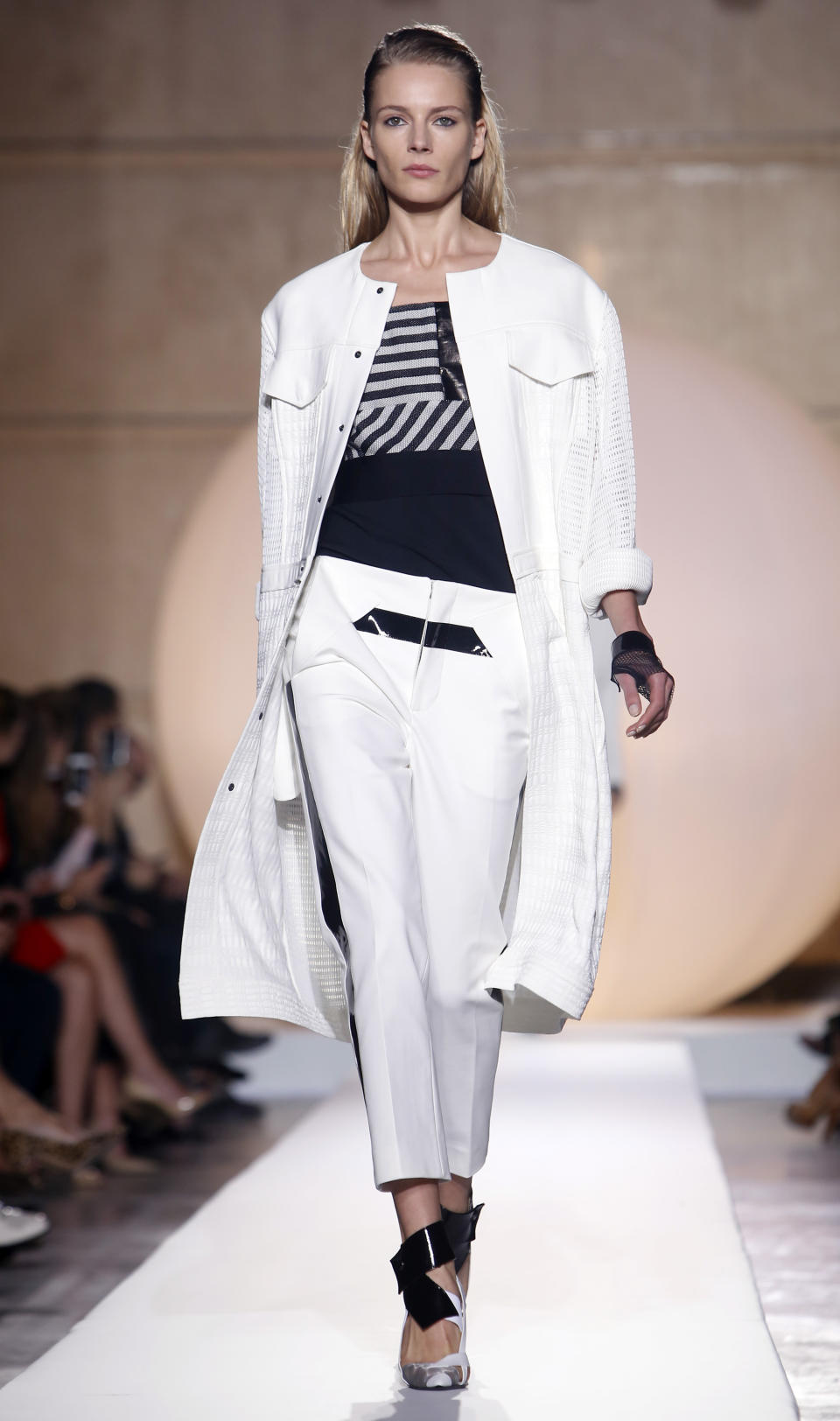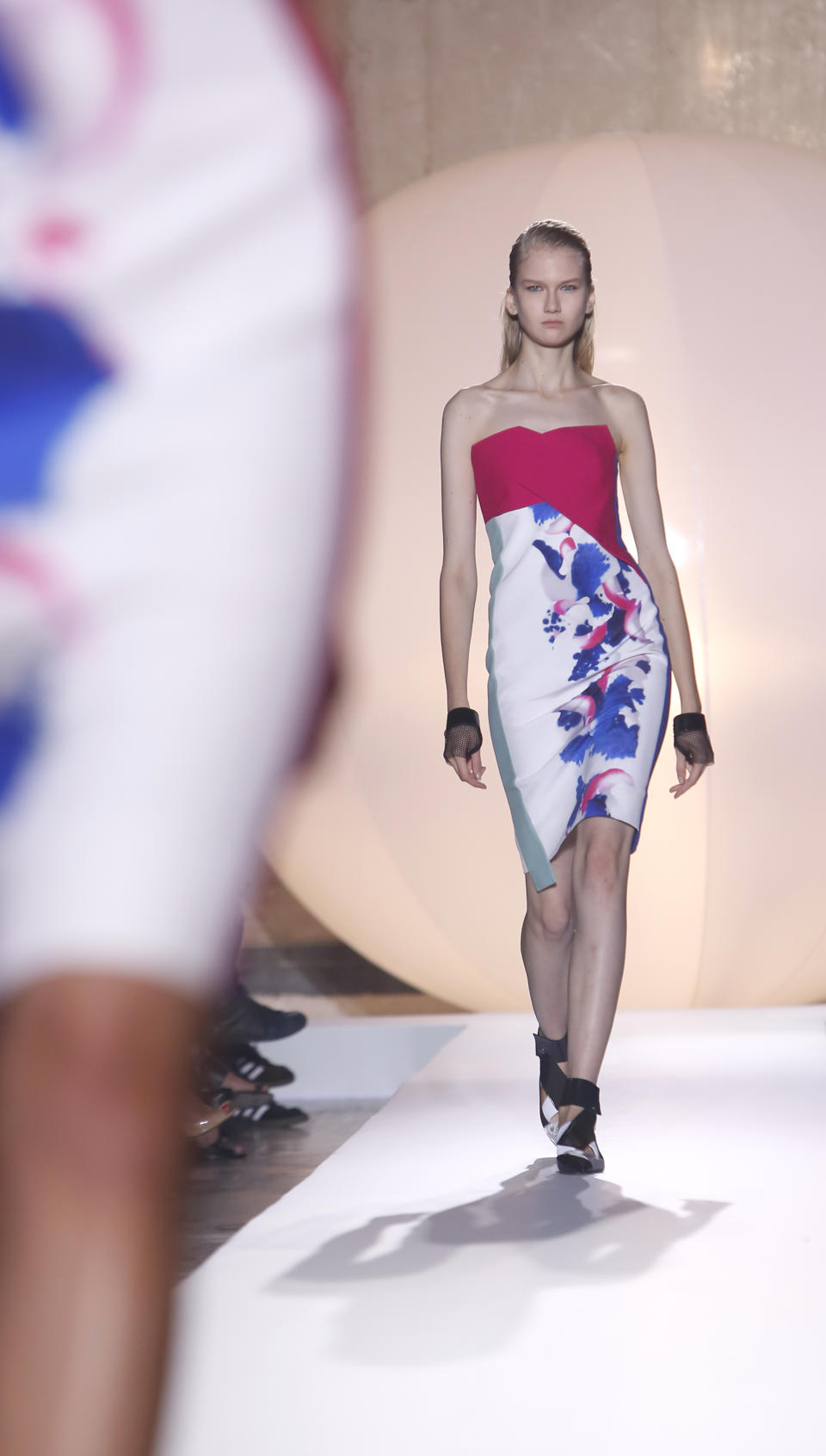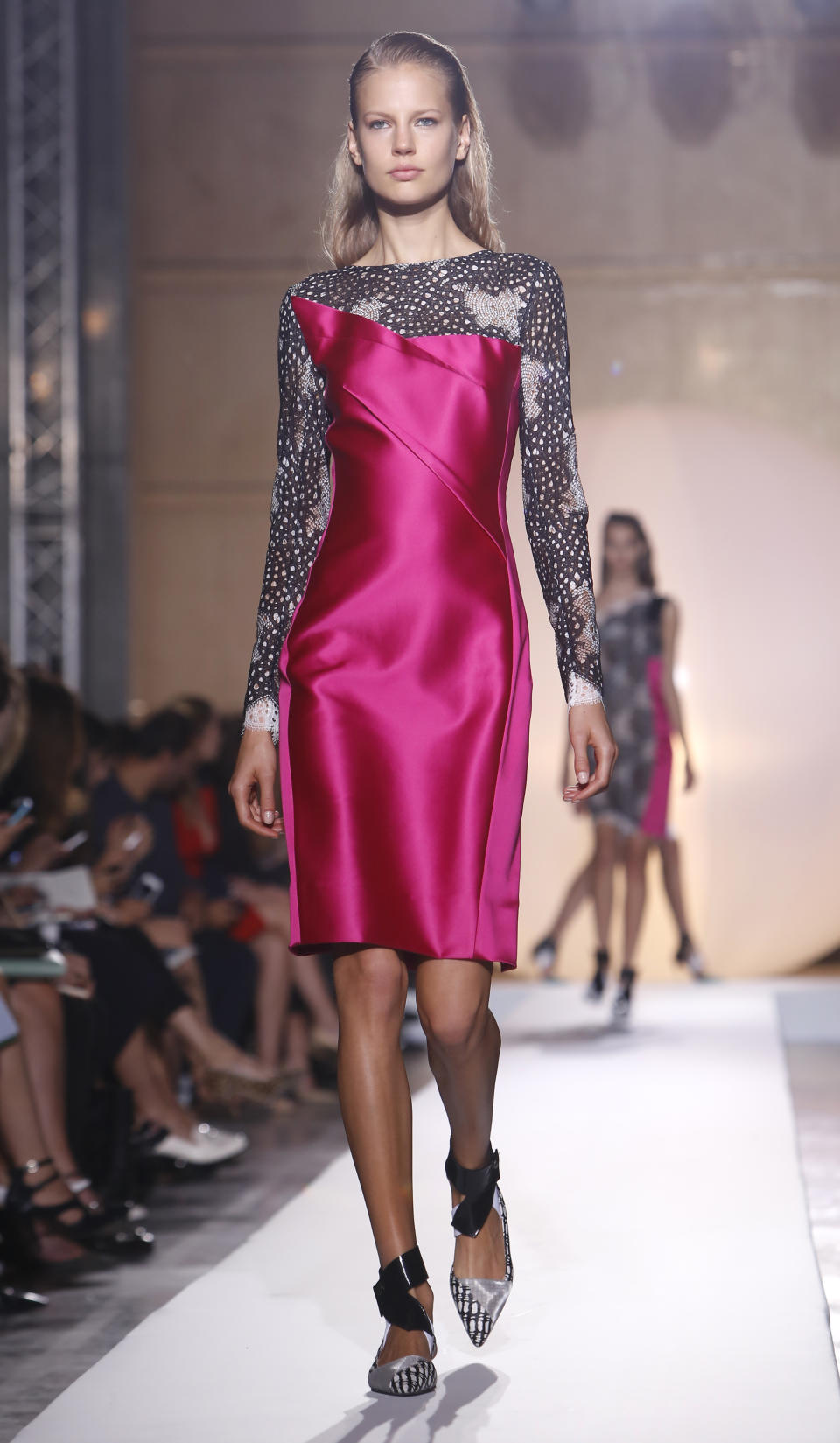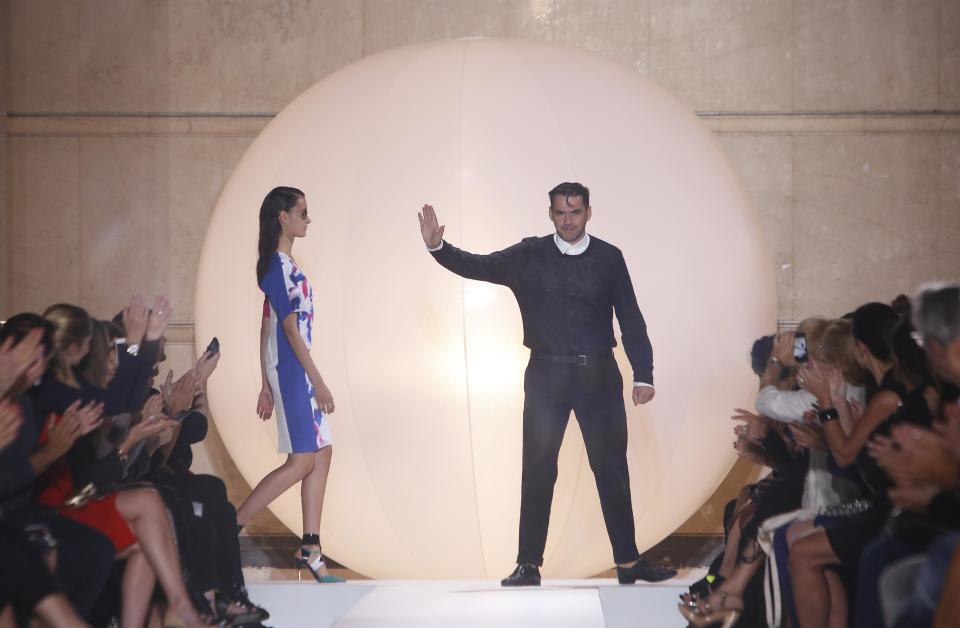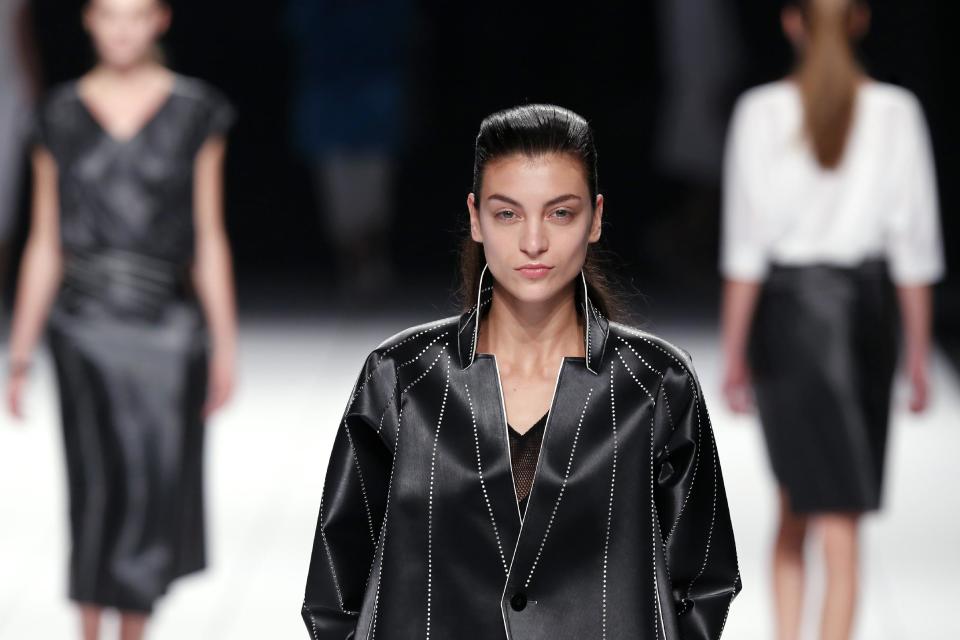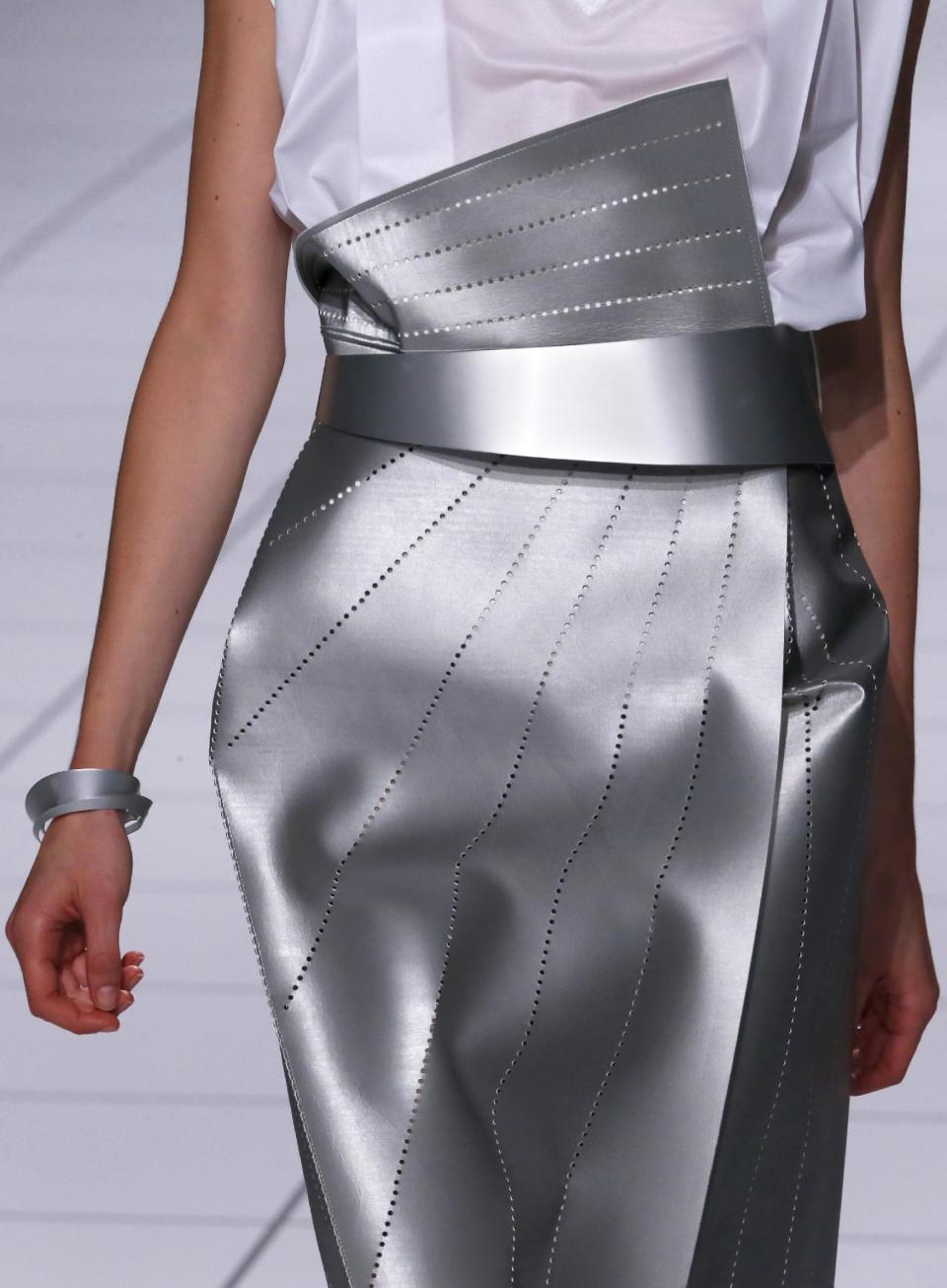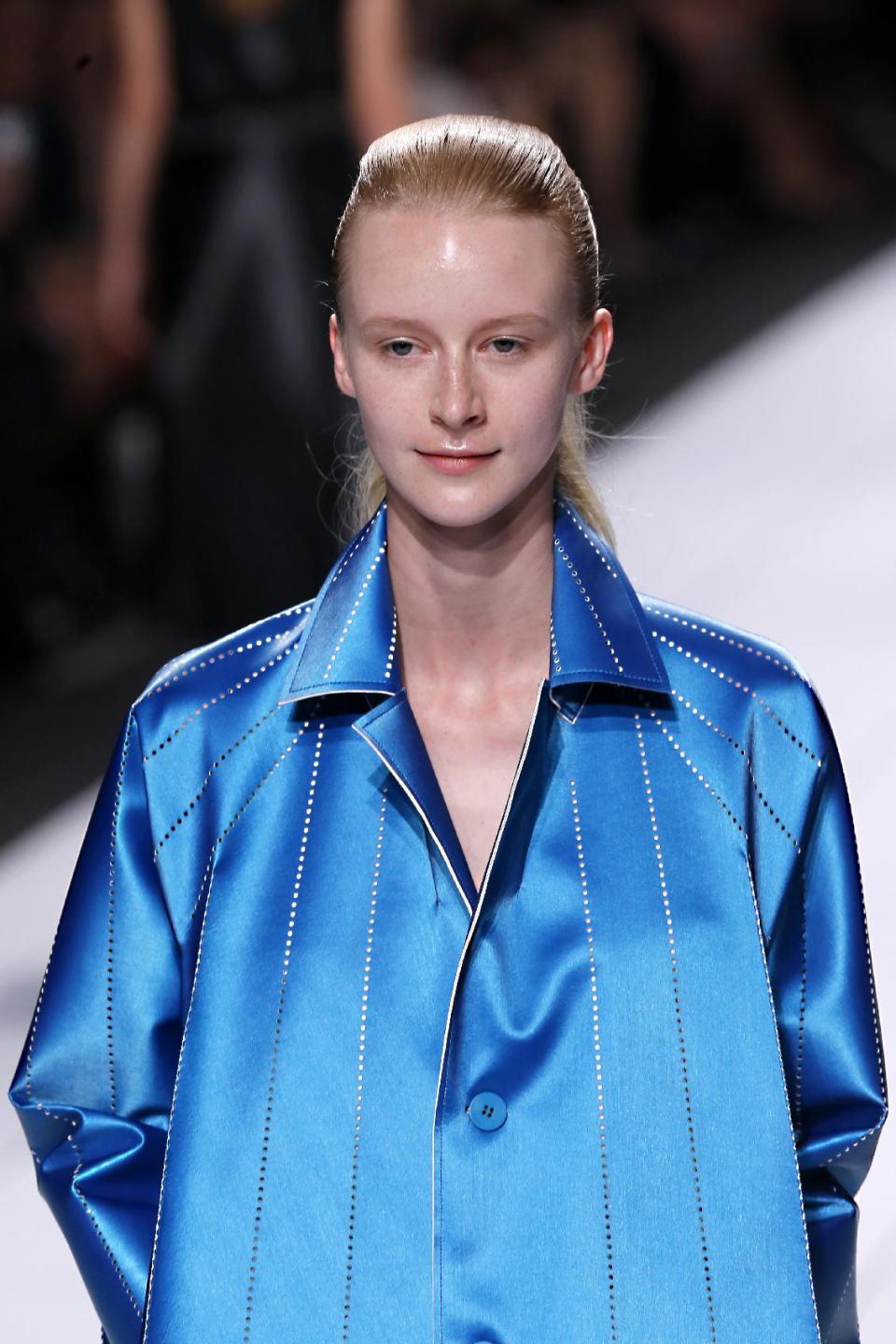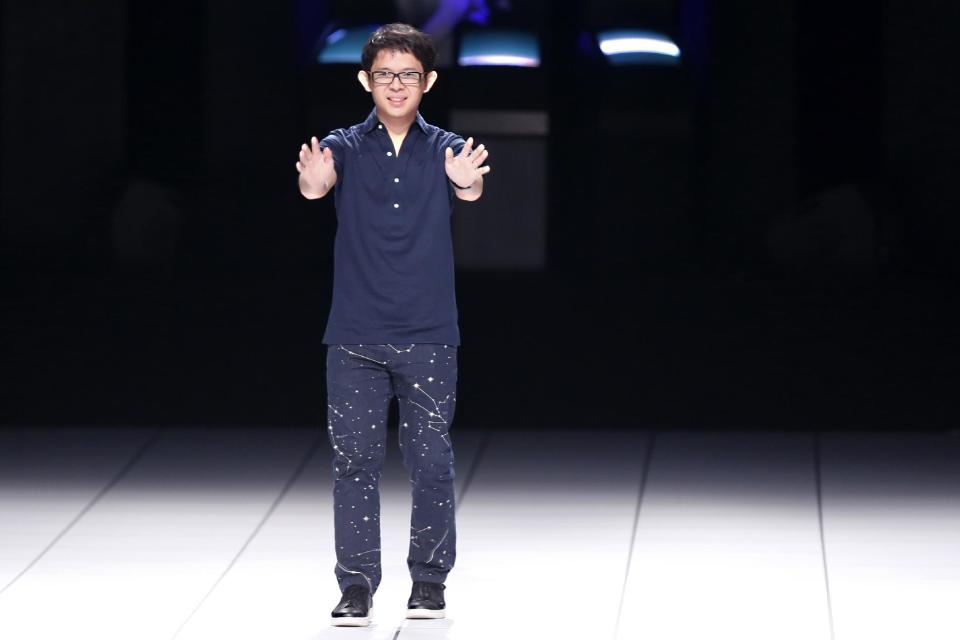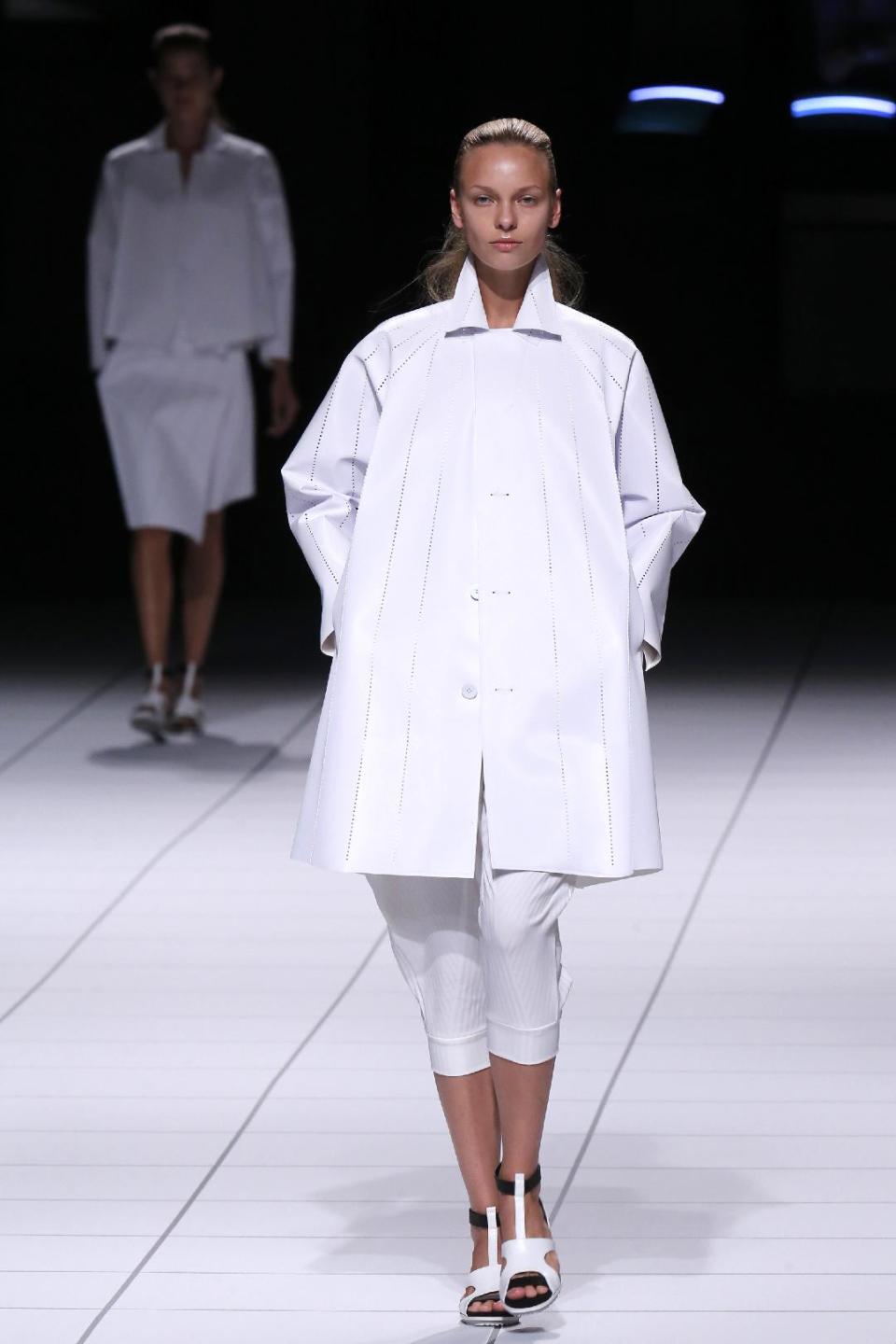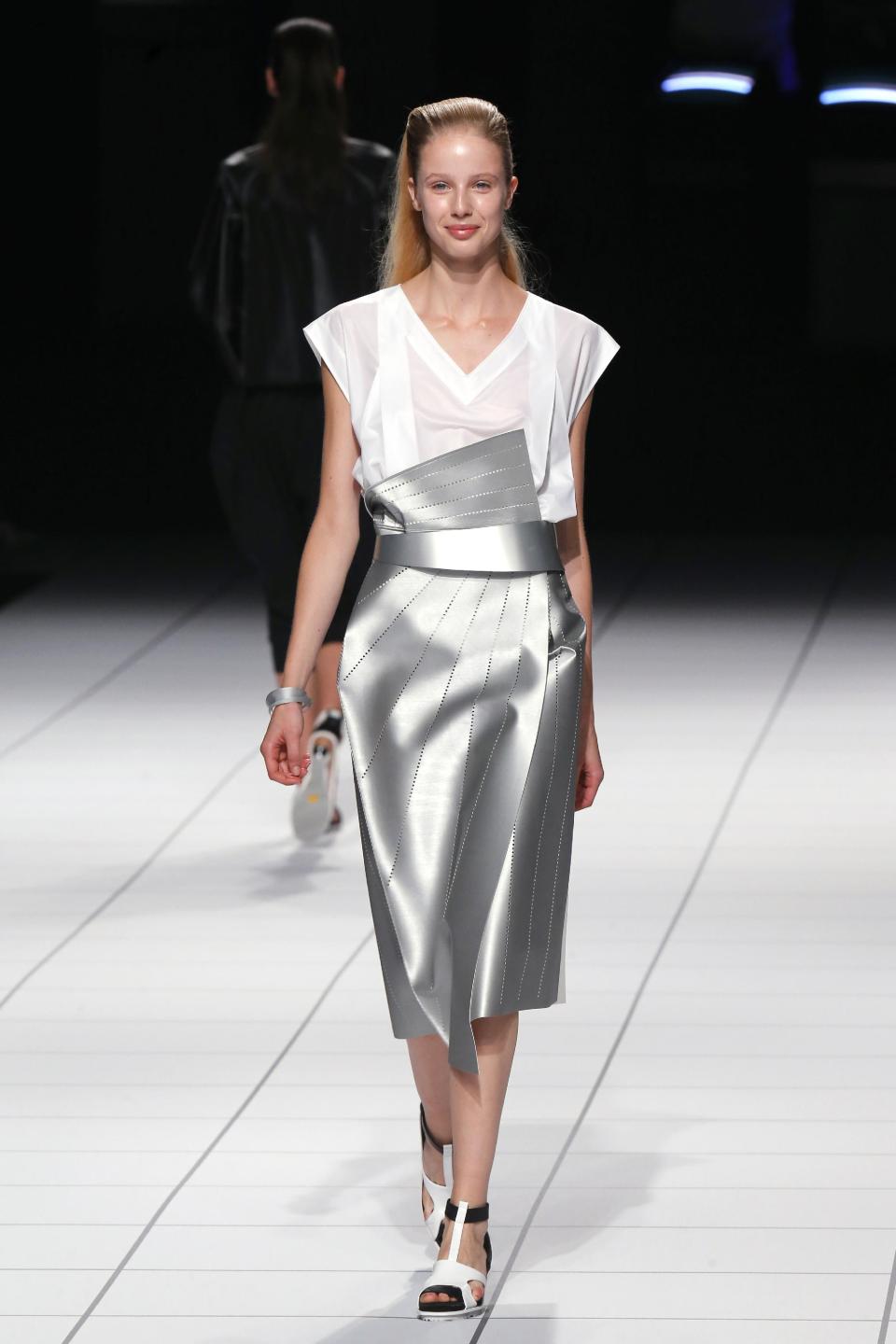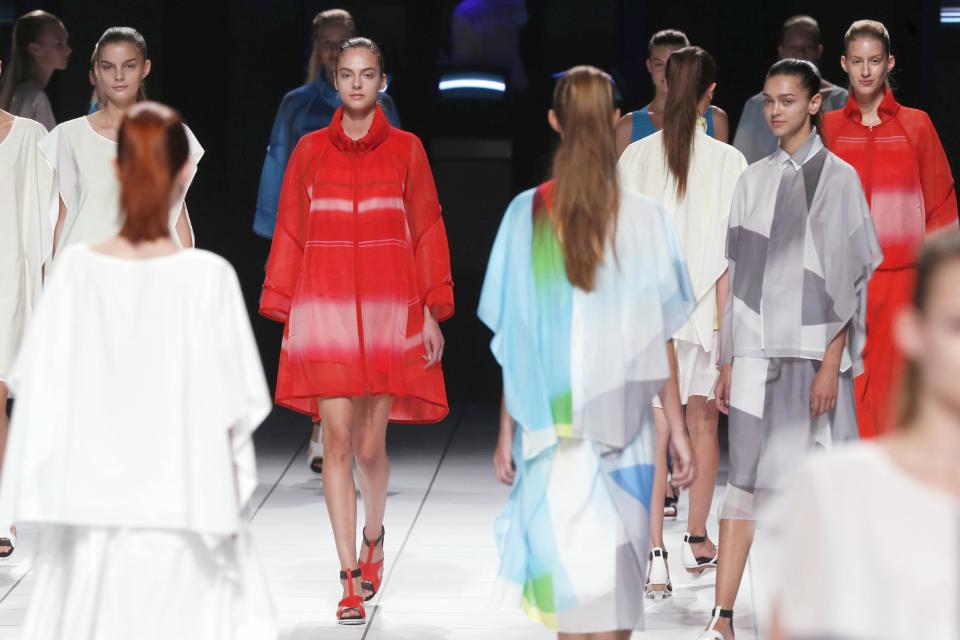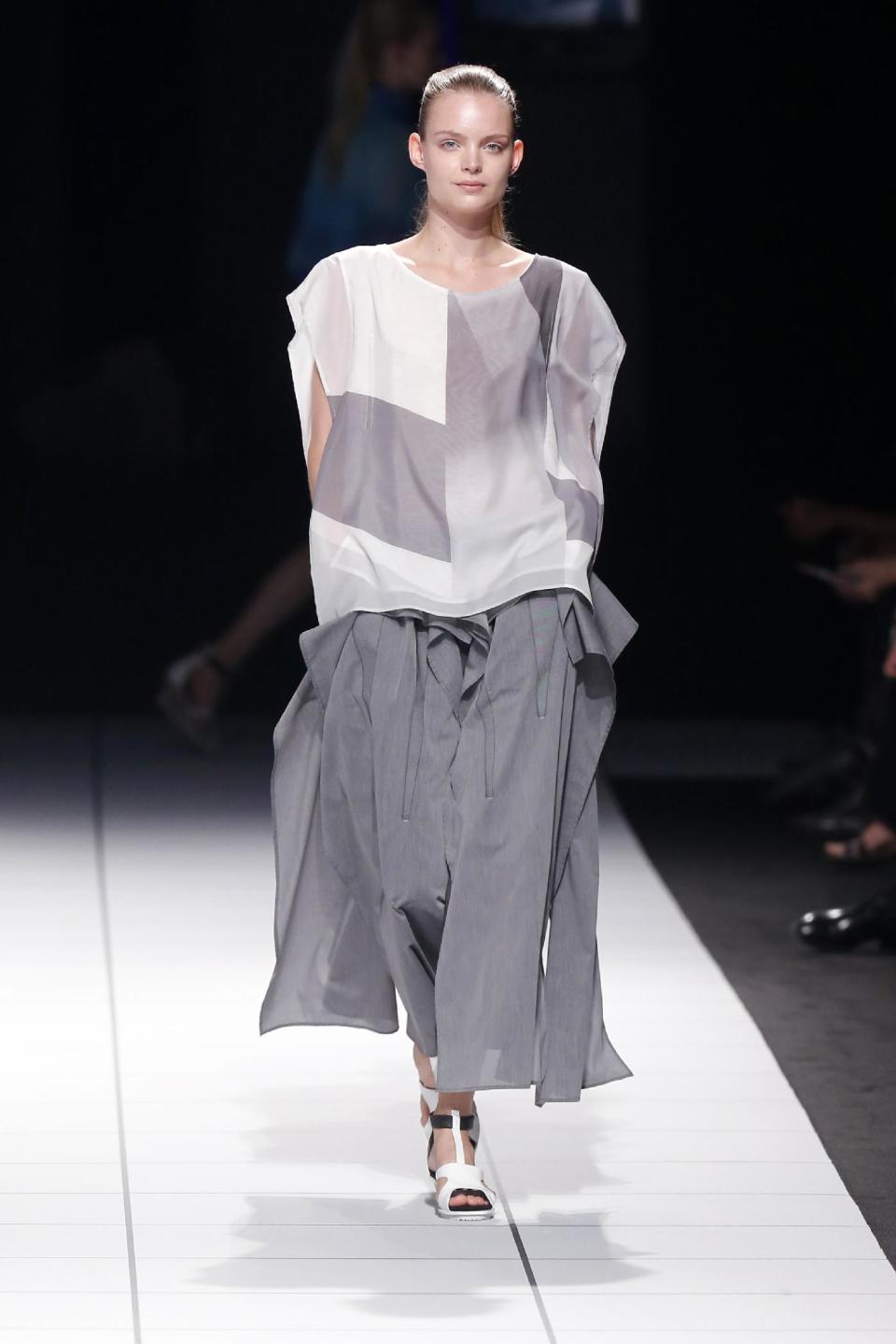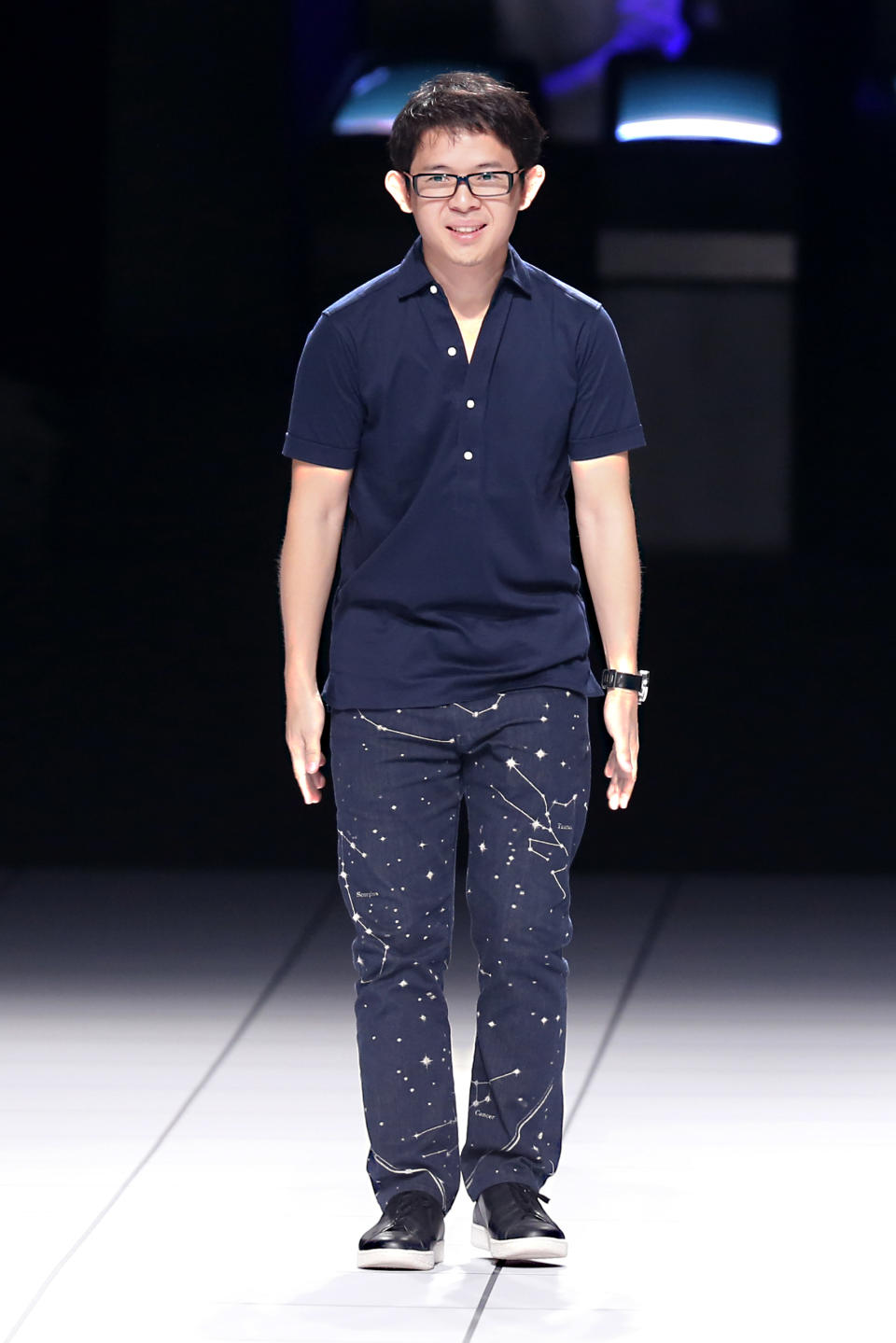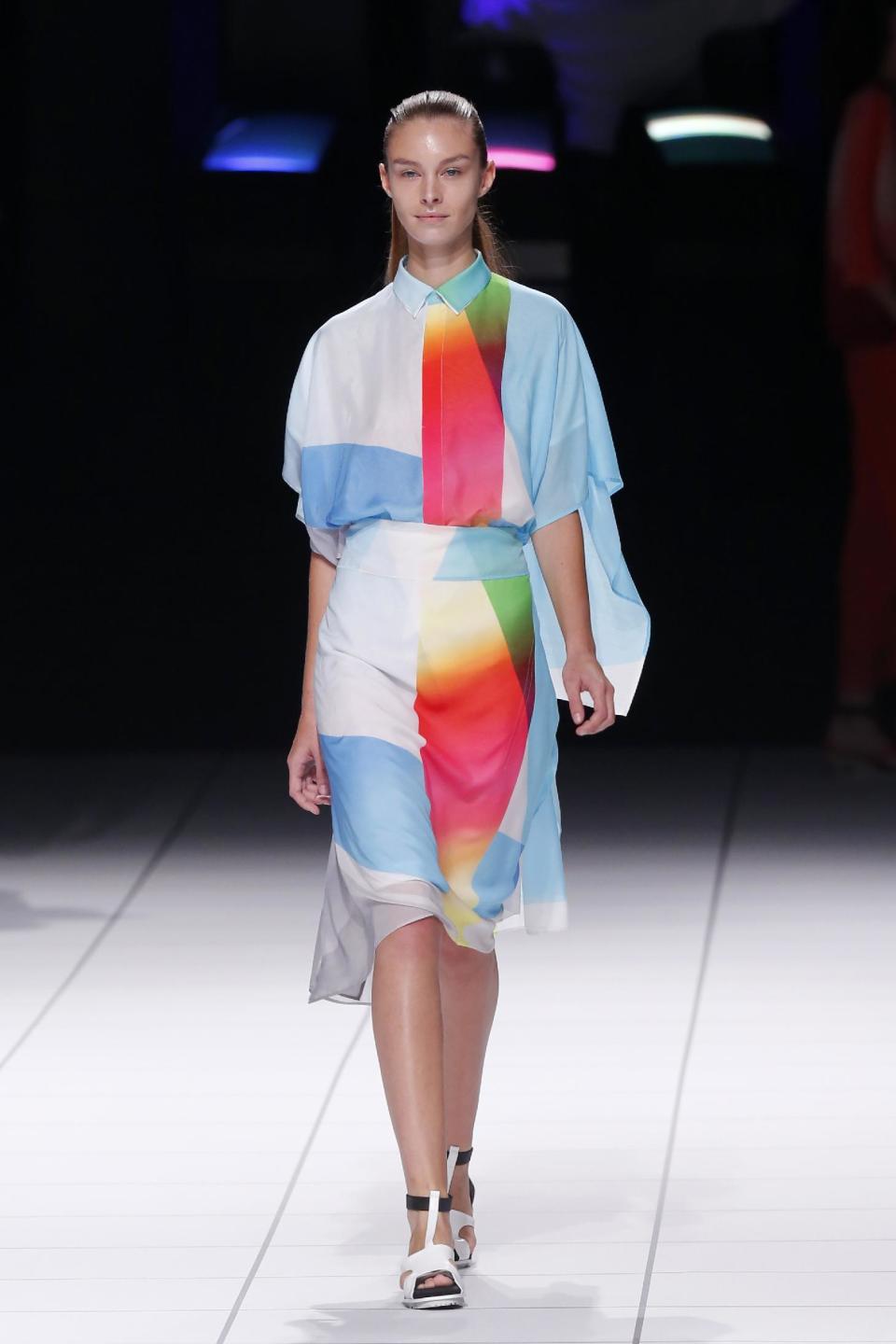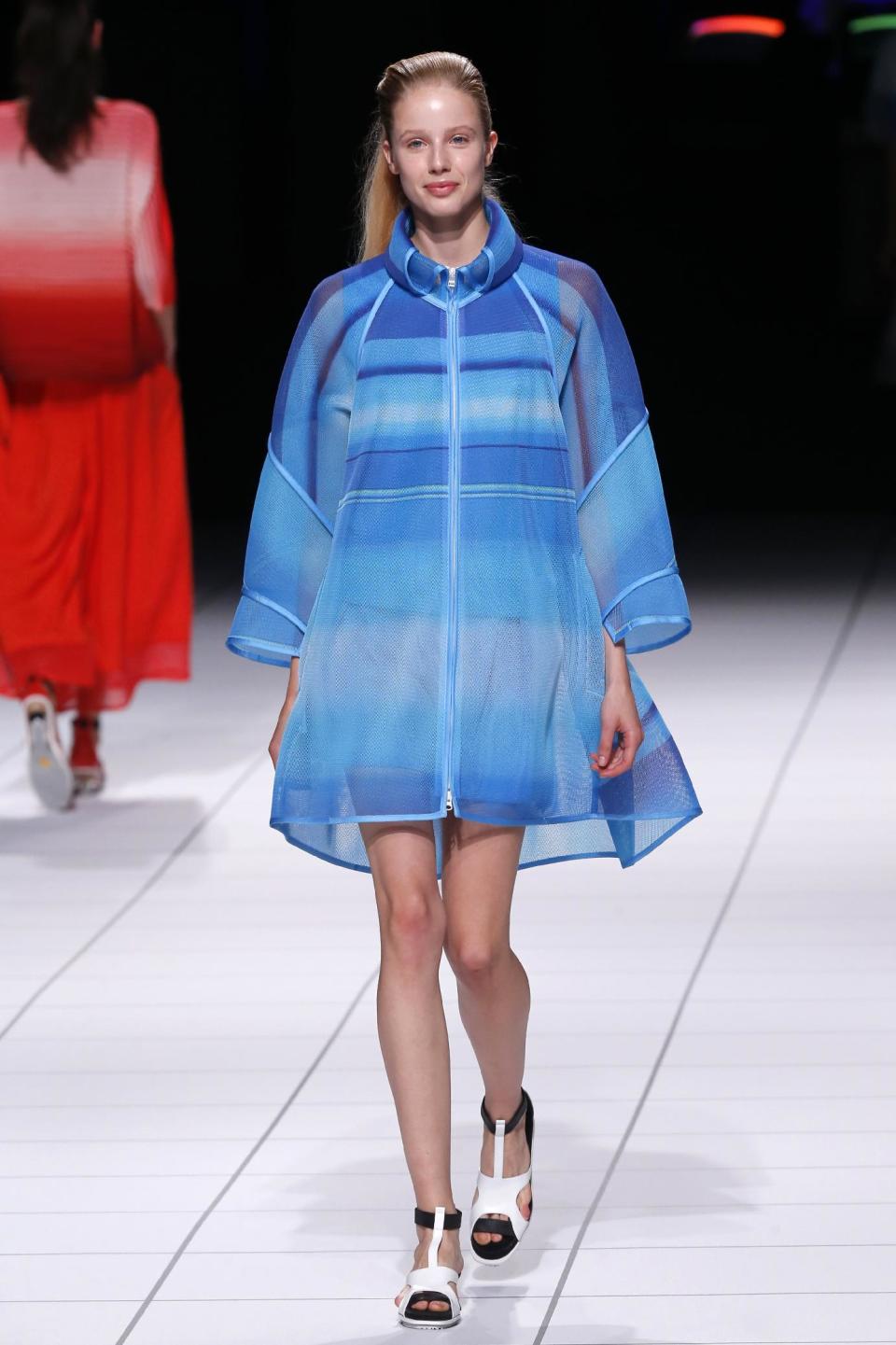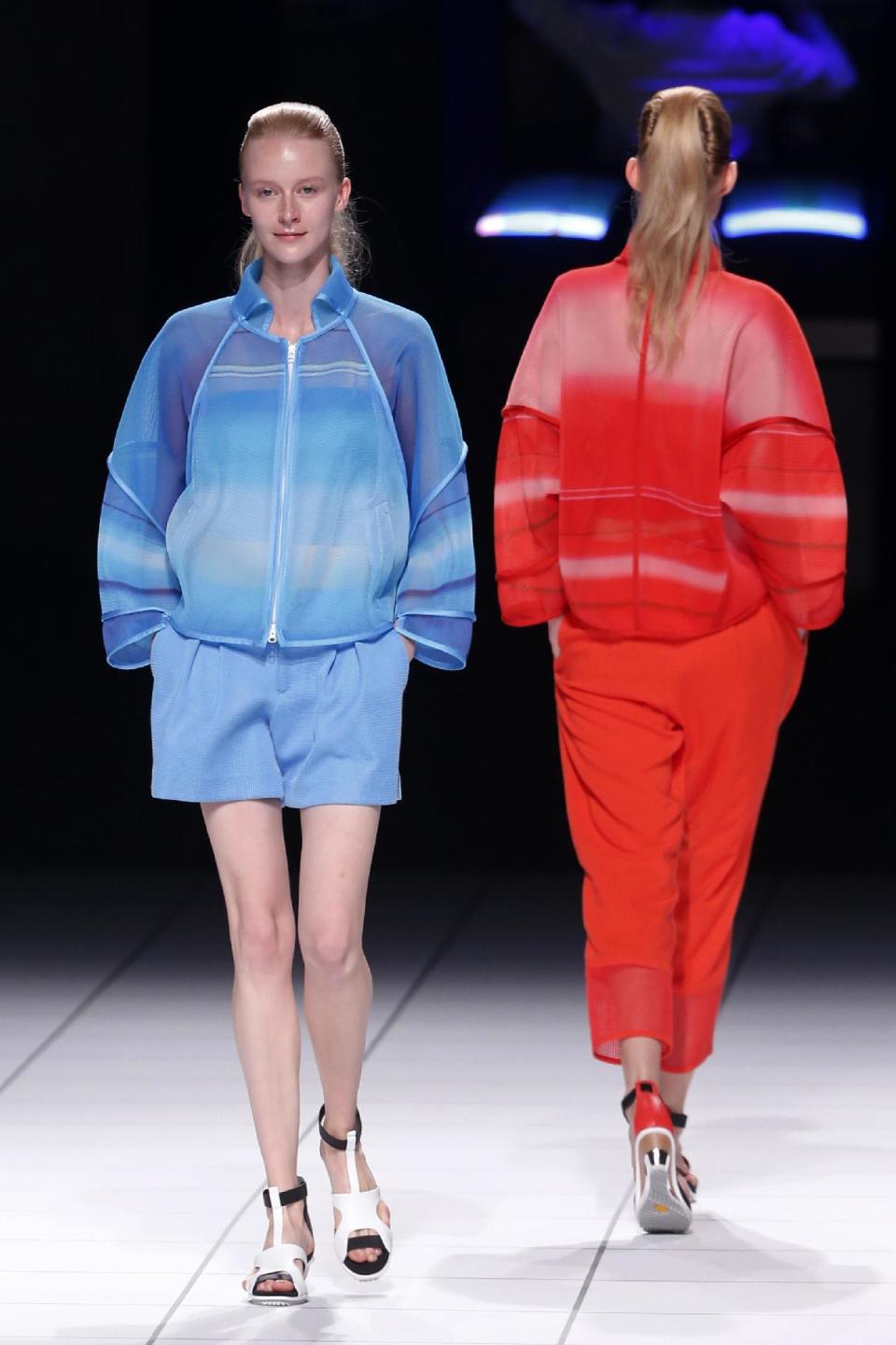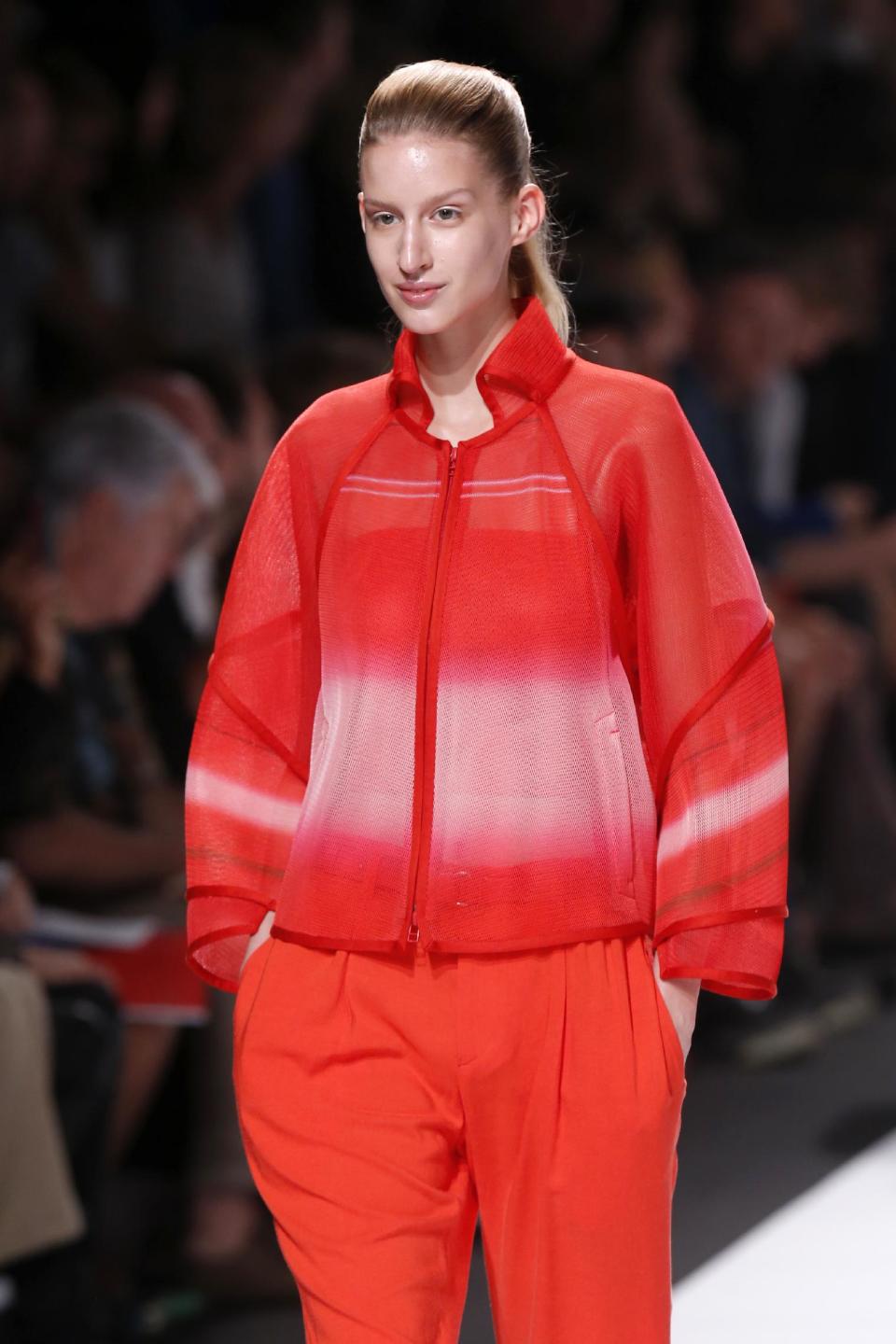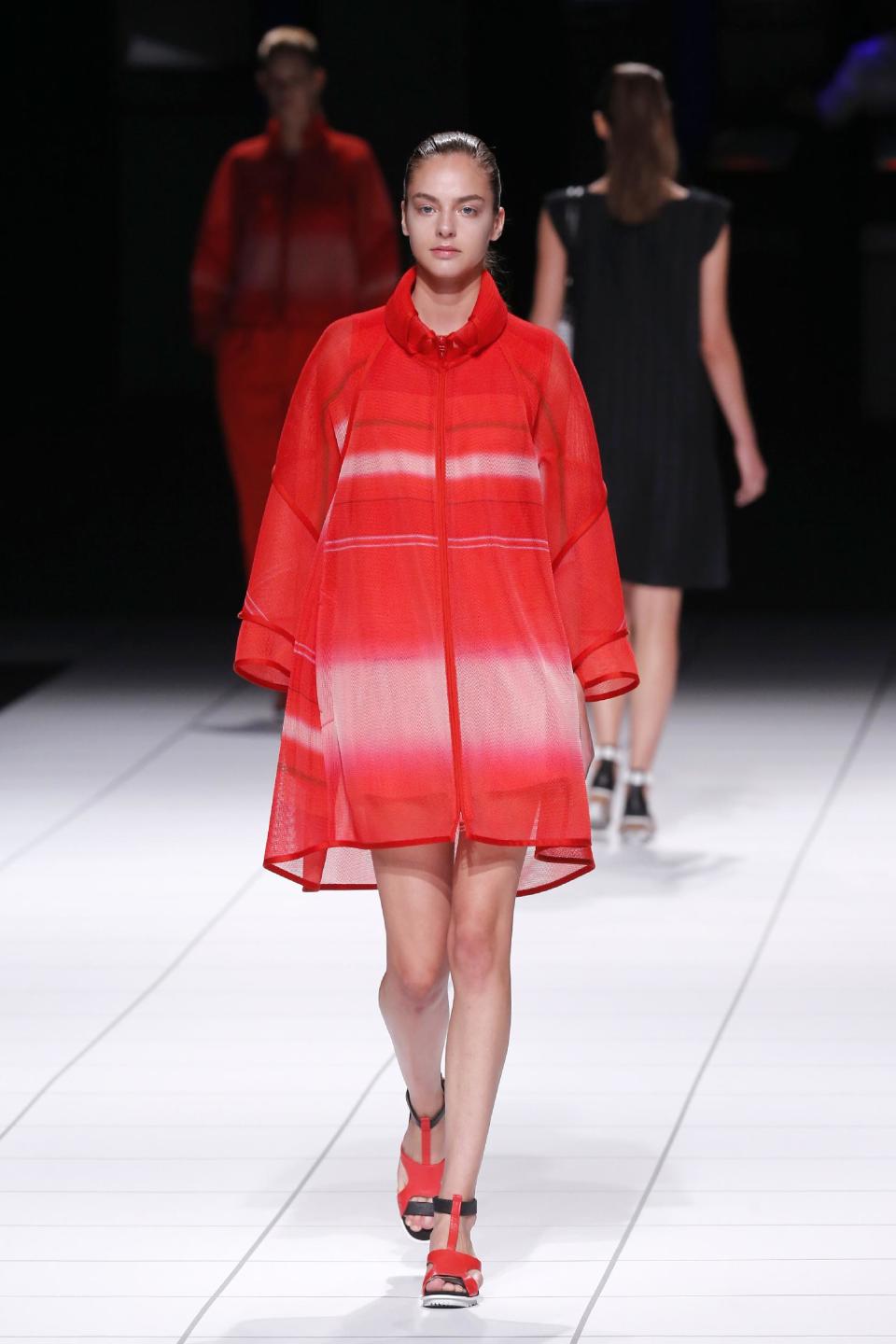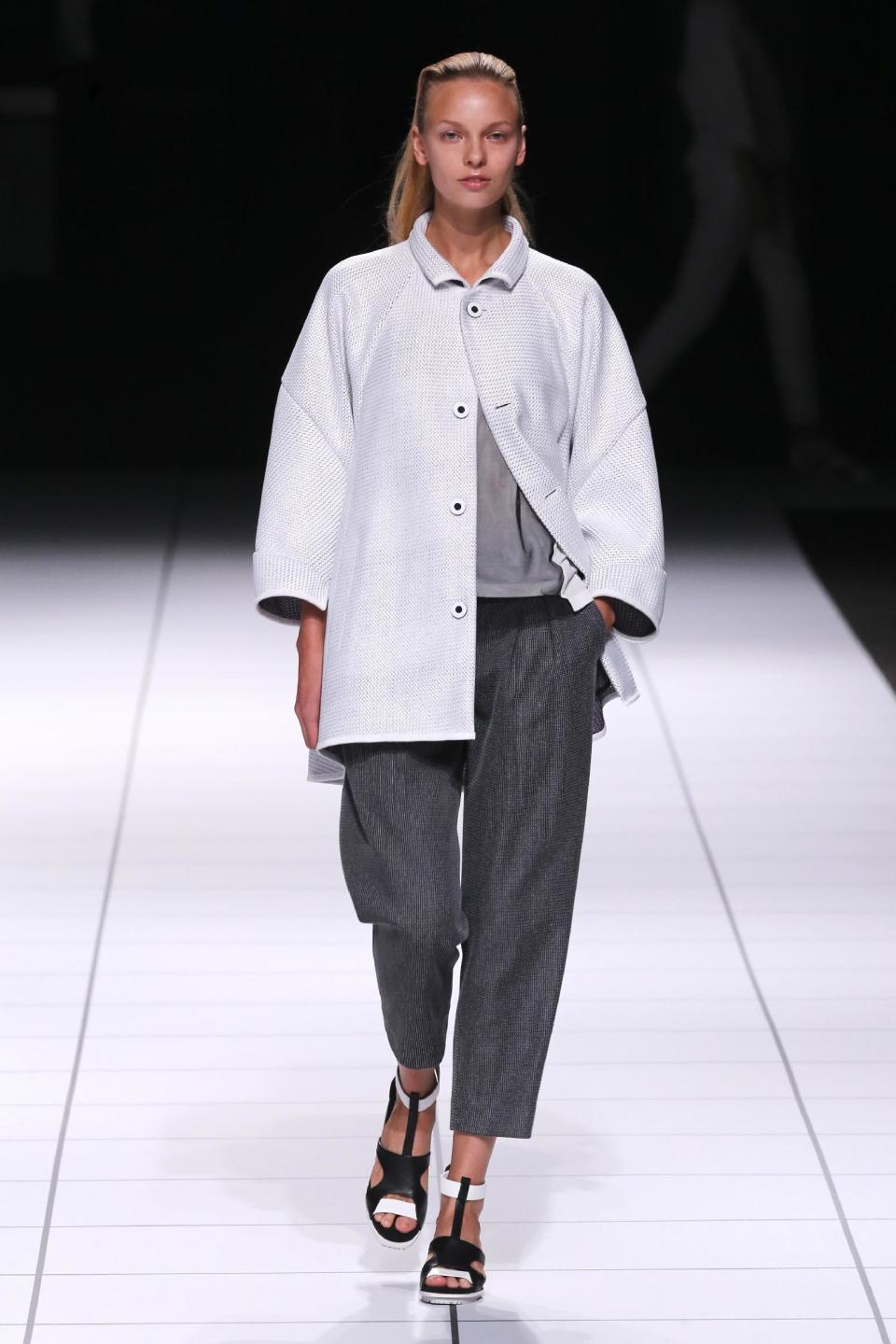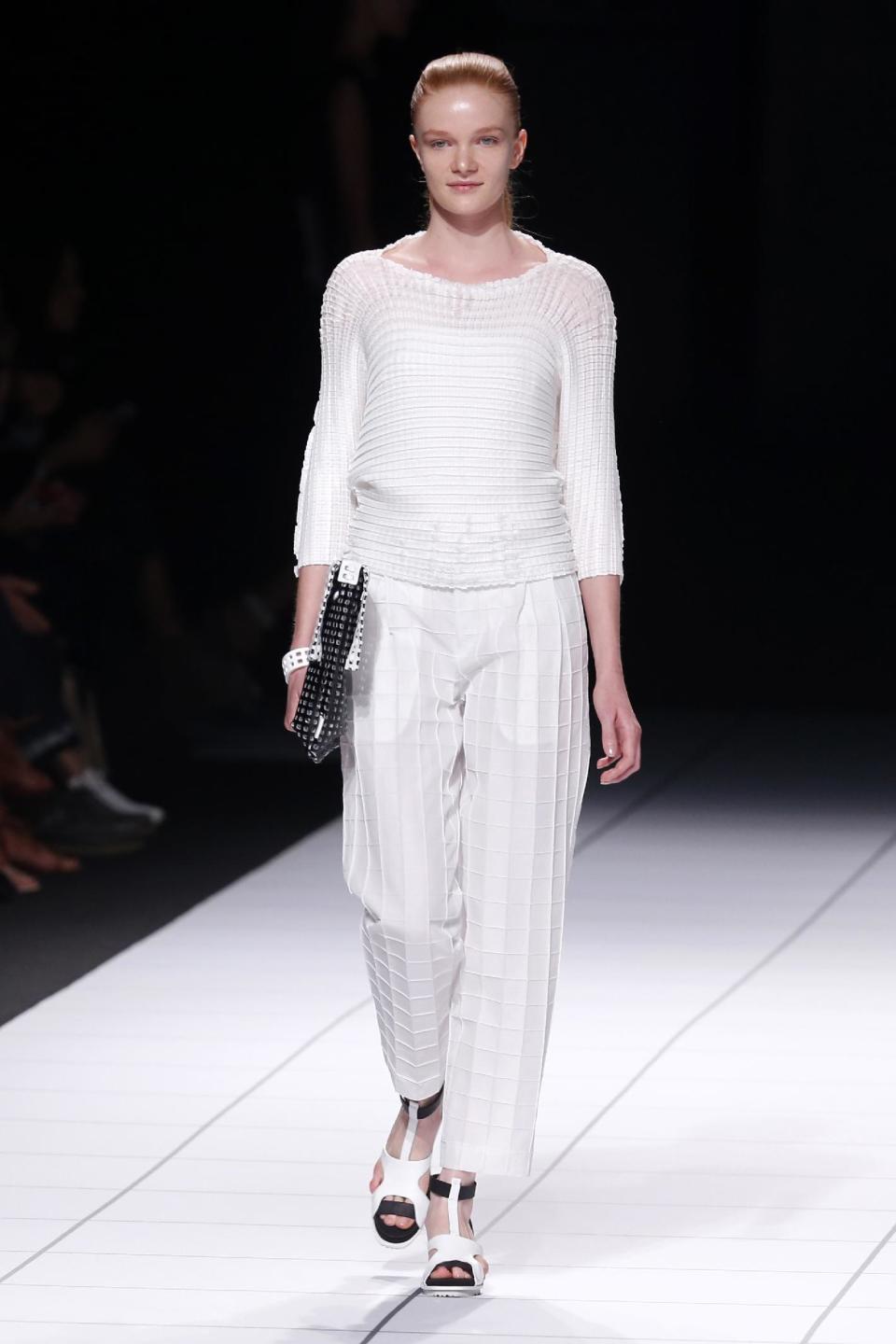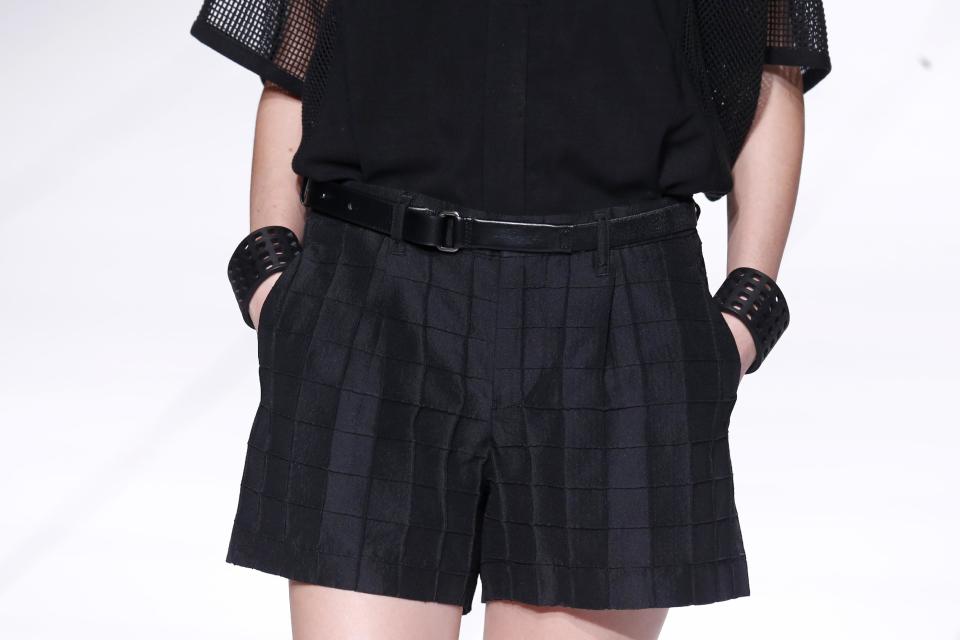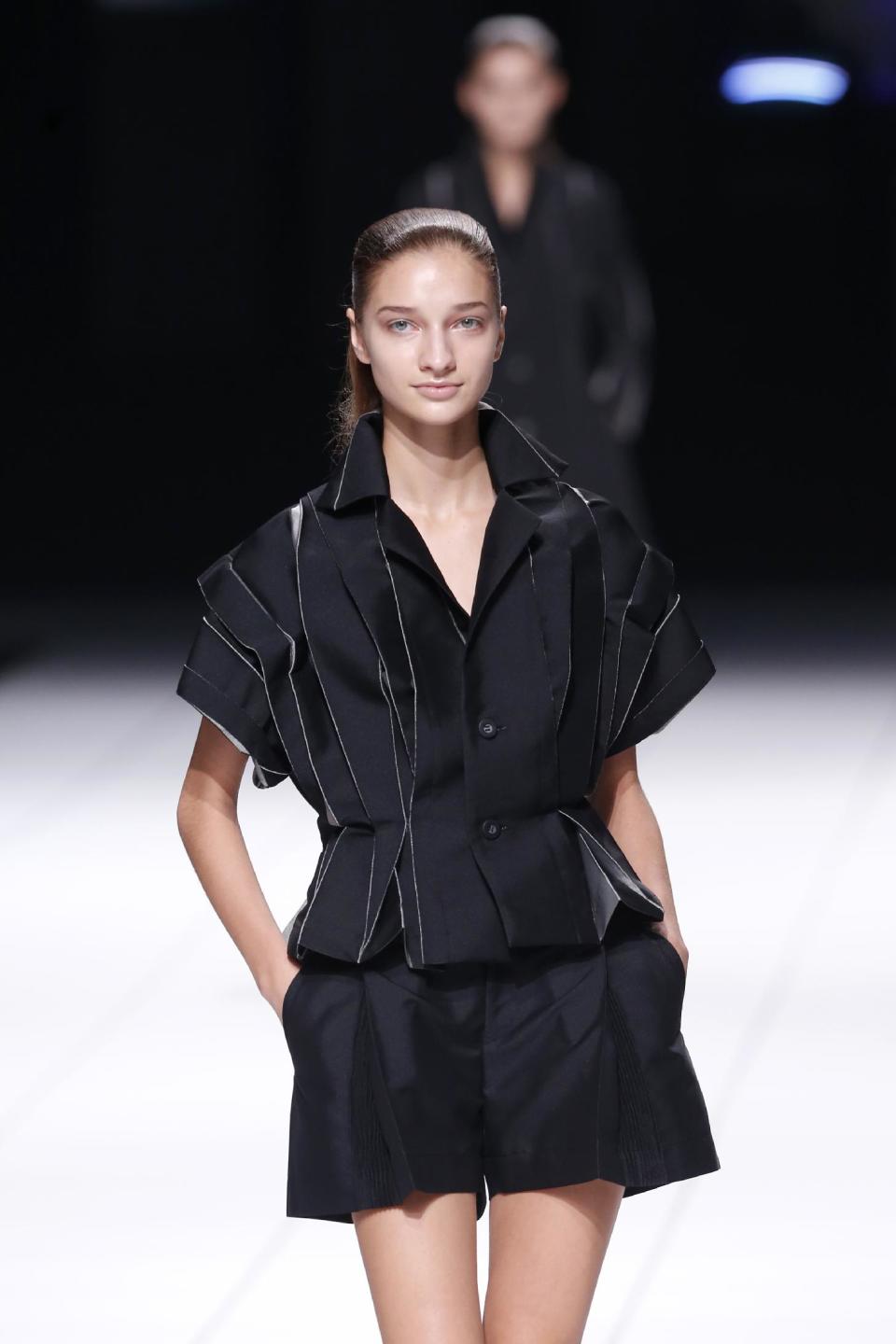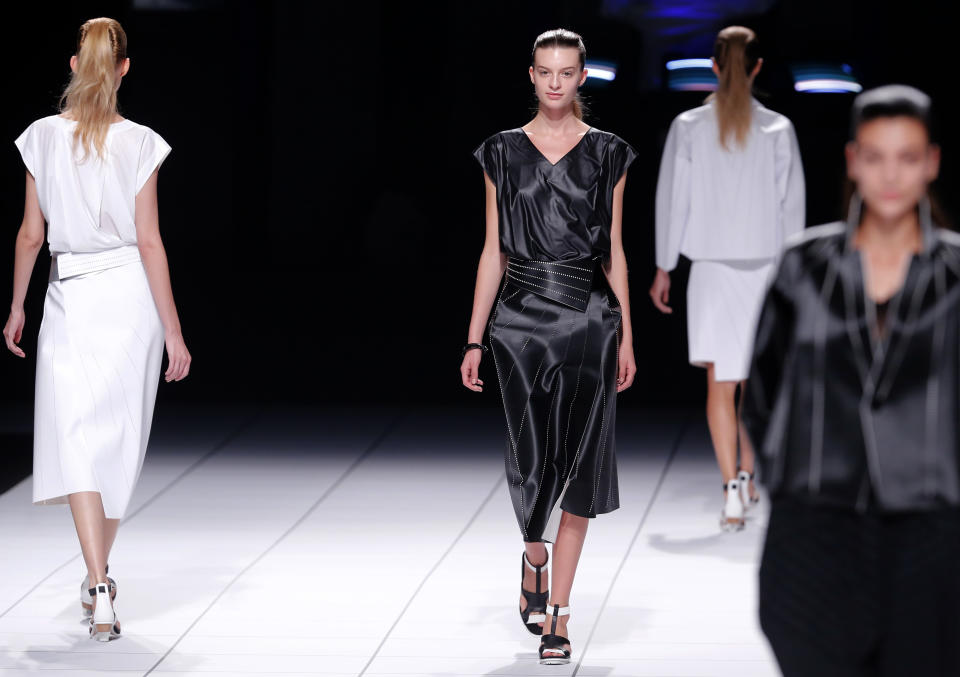Simons stamps his natural mark on Dior
PARIS (AP) — Thousands of square meters (yards) of hanging vines, wisteria and roses — some real, some fake — created a garden setting through which designer Raf Simons' took guests on the latest Christian Dior journey for spring-summer 2014.
But in the garden Simons created — with its lurid-colored flora hanging from make-shift metal scaffolding — the bees sting and things were off kilter.
This was not place for faint-hearted traditionalists.
And nor was Friday's ready-to-wear collection entitled "Against Nature."
On a combative mission, a more confident Simons — now in his third season at the creative helm — said he wanted to "change the very nature of things" and form "a new tribe of flower women," of Monsieur Dior.
And with a promise of a poisonous rose bed, guests including French first Lady Valerie Trierweiler to models Eva Herzigova and Natalia Vodianova, ducked under hanging branches to get a glimpse into how a now more confident designer — in his third season at the creative helm — would impose his personal vision on to the house's weighty DNA.
Other shows of the day included Roland Mouret, Anne Valerie Hash and Issey Miyake.
CHRISTIAN DIOR
Simons' experimental collection was presented in a tent within Paris' Rodin Museum.
The show's theme was immediately seen to echo in the decor, with the myriad flowers — in unnaturally vivid colors — having no place inside a tent.
The blossoms were, of course, just the backdrop in Simons' colorful creative mission.
When the show opened with a black bar jacket — the icon of 1949's New Look — slashed at the sides, his intentions were clear.
Simons intended to engage with and go against the DNA of the Dior house itself.
A series Dior archive lantern dresses had slashed looped pleats, which were thrown off kilter either in glaring blue or with rebellious printed text underneath. Elsewhere, pleating was used excessively and abstractedly. "Skorts" (a pair of shorts resembling a skirt) came in dazzling multicolors.
He was certainly taking risks.
There were plenty of ingenious DNA subversions at work here and many of the 76 looks made a great statement.
But the small problem was just that: 76 looks — including swathes of sparkling metallics — was perhaps too much, and with Simons' overactive brain it felt at times that he was trying to fit too much into one show, or please too many.
But then again, Simons' mission is not a small one: To "propel Dior's iconic style into the 21st century." He certainly did that here — and then some.
ISSEY MIYAKE
Franco-Japanese fashion house Issey Miyake used state-of-the art techo fabrics to perfect an array of crisp garments that resembled origami.
The first looks in white were startlingly beautiful.
Angular skirts, geometric coats and square jackets with sections of fabric descending in expanding linear bands, their folded divisions owing to tiny punched lines of holes. The aim of designer Yoshiyuke Miyamae was to recreate "glistening white moonlight," with the style repeated in black to capture starlight.
The results were garments with the stiffness yet softness of paper that reflected one of the strongest Issey Miyake collections in seasons.
Elsewhere, Miyamae let in the sunlight with a series of colorful and floaty knee-length gowns, capturing the linear feel of a ray of light in vivid geometric bands of color.
ANNE VALERIE HASH
There was a soft power at work in Anne Valerie Hash's spring-summer show.
Perhaps it lay in the confident poise of the models who stood still to present the mainly pastel-colored clothes, striking poses in sporty-looking white Oxford shoes.
Or perhaps it in the sharp geometric and shard-like shapes that graced many of the 19 looks.
Whatever it was it made for a sweet — if short — presentation.
Shapes appeared as lines on skin-tight — almost medieval — pants descending down the leg in soft colors in a slight diagonal that created an energy.
Elsewhere, the forms reappeared as geometrical triangles, which gave one great floor-length dress in blue, gray and black a feel of the graphic Art Deco glamour of the 1930s.
ROLAND MOURET
Roland Mouret used the black and white stripes of contemporary artist Daniel Buren that lie inside Paris' historic Palais Royal for spring-summer.
It was certainly an inventive way to tackle the infectious monochrome trend that's turning into one of the season's biggest stories.
One long white coat with a round collar was subtly complemented by a top featuring the famed black and white stripes that mark Paris' central landscape. They cropped up on an oversized clutch and as heel straps on pointed stilettos.
Mouret's black and white coats thus gave way to stripes of bold fuchsia, pale yellow and vivid blue.
The best look was a sectioned-off knee-length dress with a jade green and blue "collage" top seemingly stuck on.
Among some of the more obvious creations, it was a great abstraction.
___
Thomas Adamson can be followed at Twitter.com/ThomasAdamsonAP
